Inbox and environment news: Issue 506
August 15 - 21, 2021: Issue 506
Kookaburra: Our Place, August 14, 2021
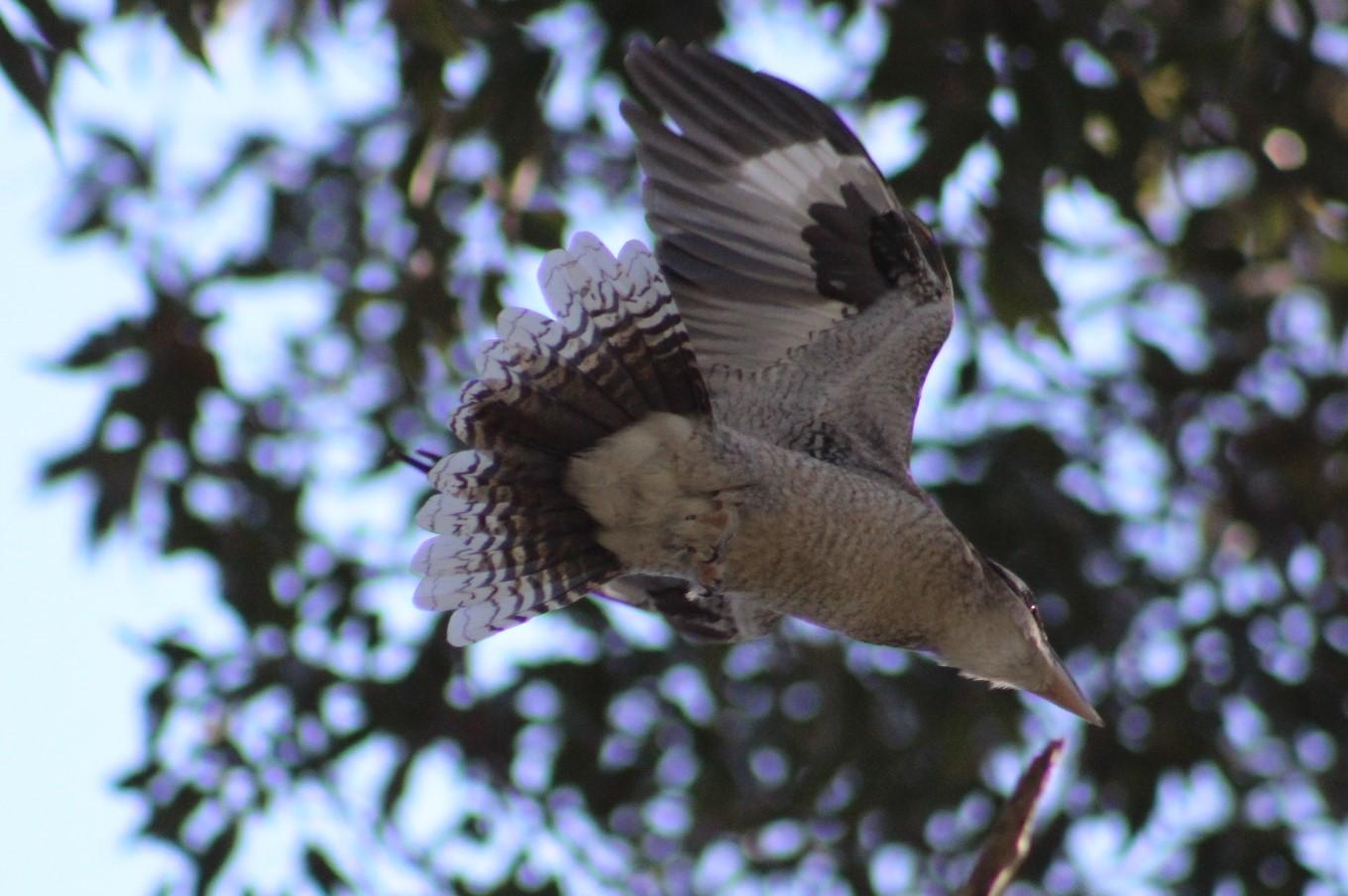
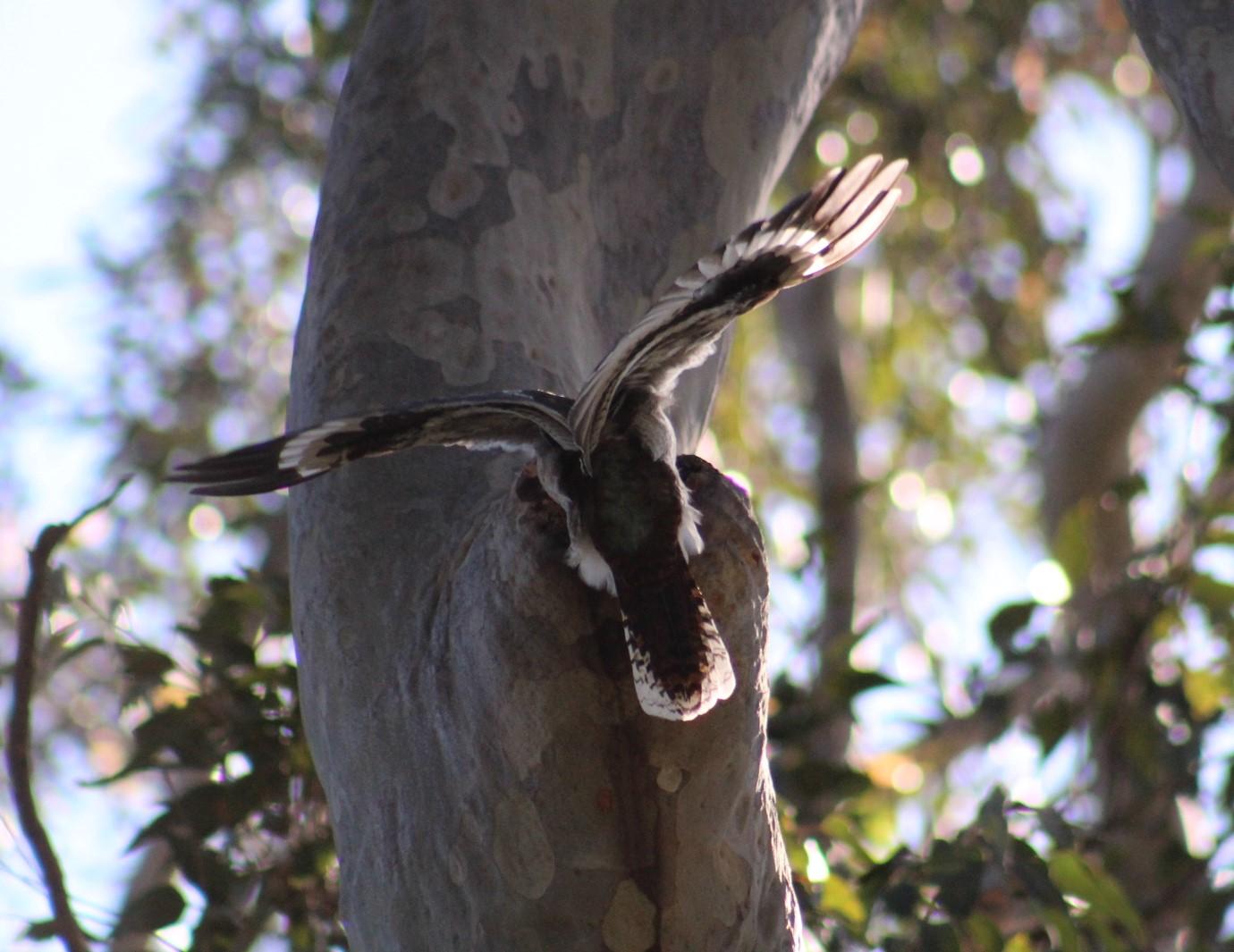
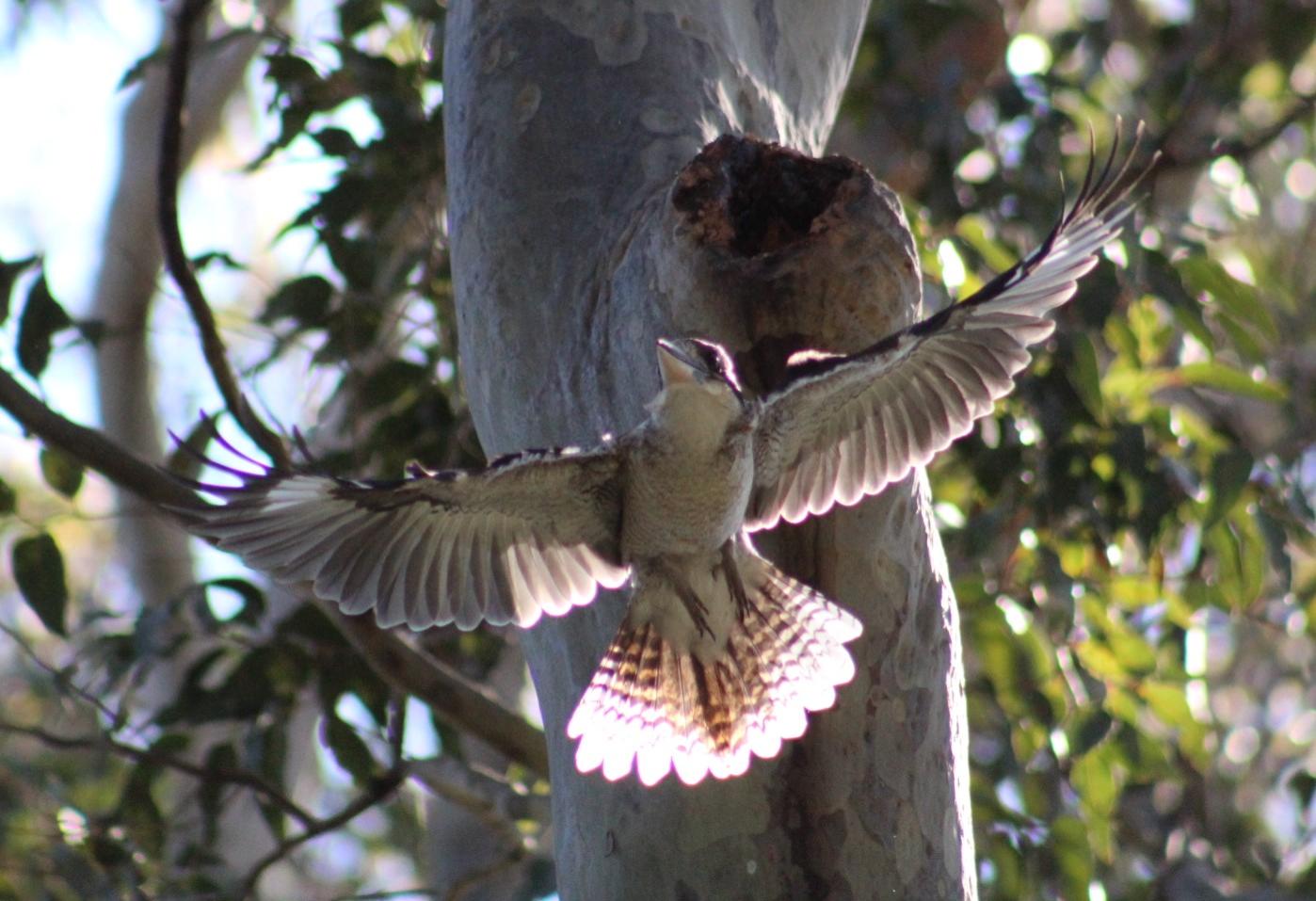
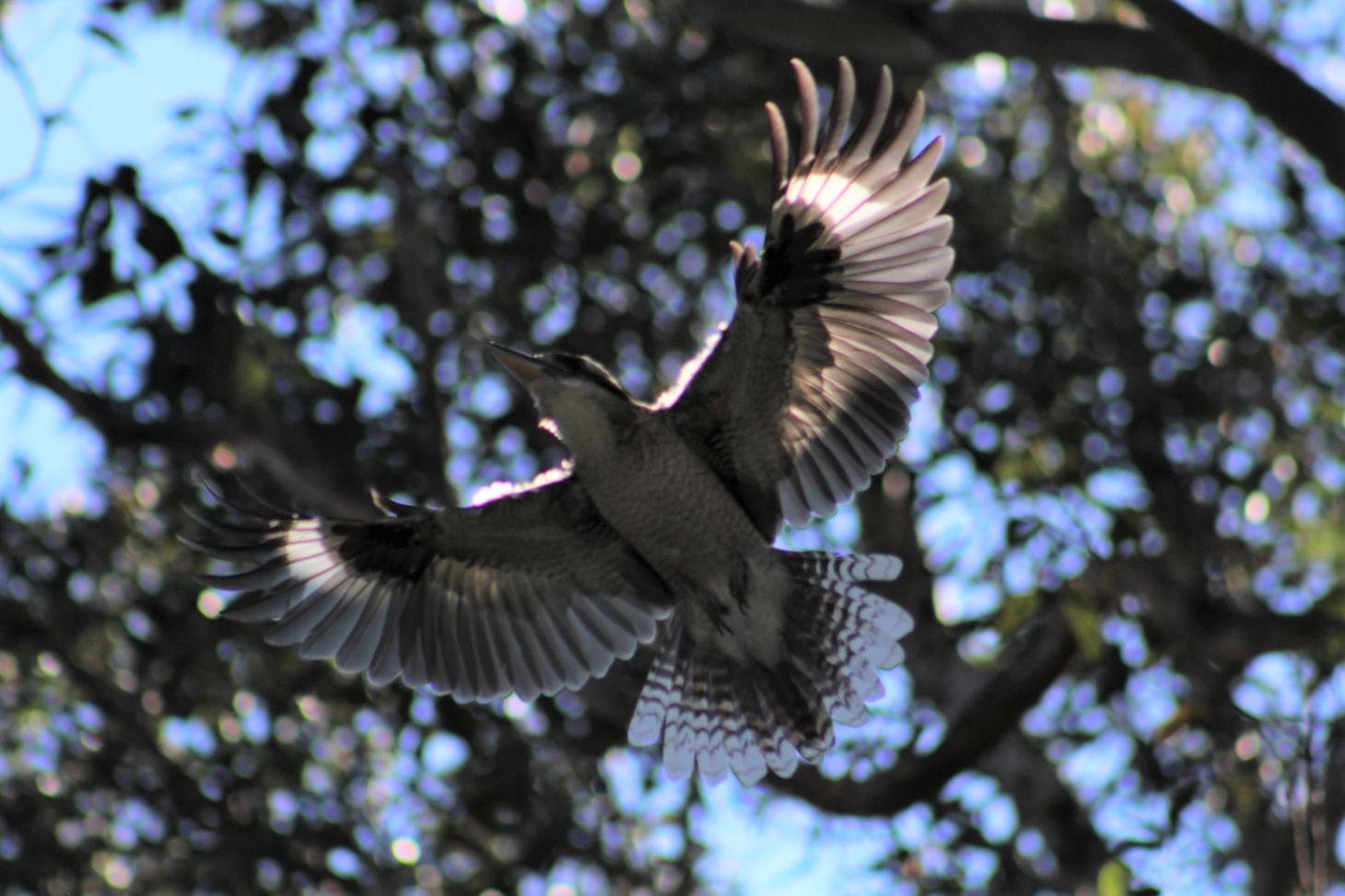
CABPRA NOTICE: RESIDENT SURVEY FOR PLATEAU PARK
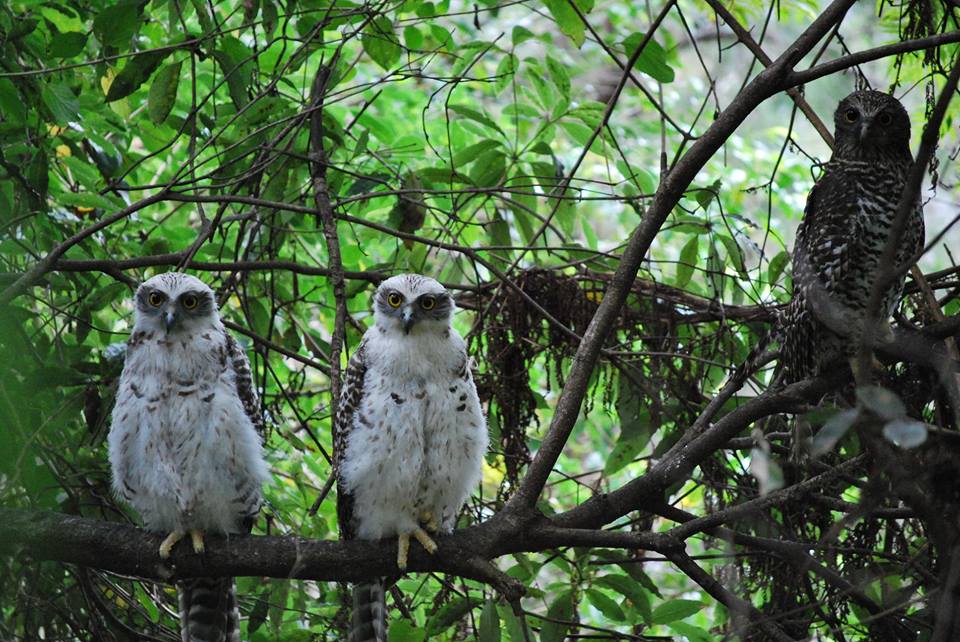
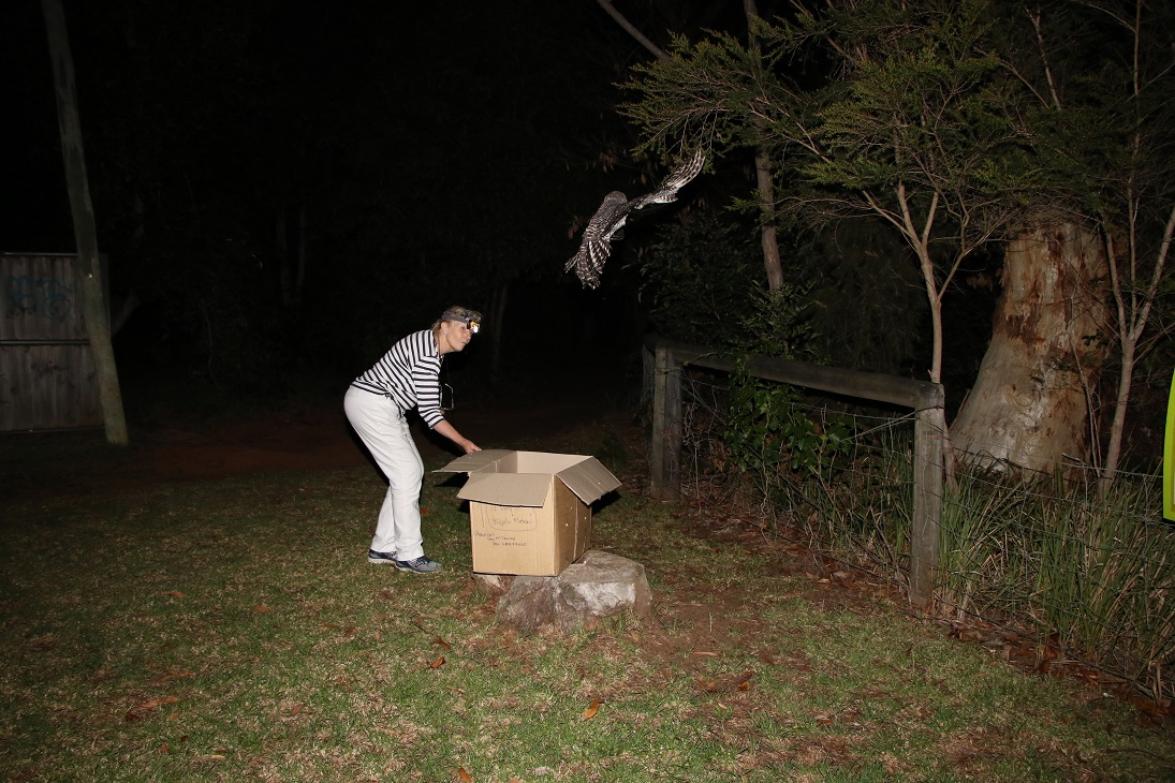
Big Shift Podcast Hits The Mark
Six Areas Begin Bush Fire Danger Period Early In NSW
It’s Magpie Swooping Season Once Again
- The most straightforward solution is to avoid locations where you know a magpie is swooping. Swooping only lasts a few weeks, so it is a minor inconvenience that could save you some blood (literally), sweat and tears.
- If you do get swooped, don’t panic and run away screaming (easier said than done, I know!). Instead, walk away quickly and calmly and maintain eye contact with them. They are less likely to swoop you if you are watching them. This also goes for cyclists—dismount and walk rather than continuing to ride
- Protect your eyes! Have a pair of sunglasses on hand any time you are going for a walk and especially in a park (same for kids as well).
- Pop an umbrella up if there is a swooping magpie around. Don’t wave it and antagonise the bird, but simply hold it above your head if a magpie is swooping.
- And of course, there are the old 'googly eyes on the ice cream container' and 'bike helmet with cable ties' tricks. Sometimes they work, sometimes they don’t.
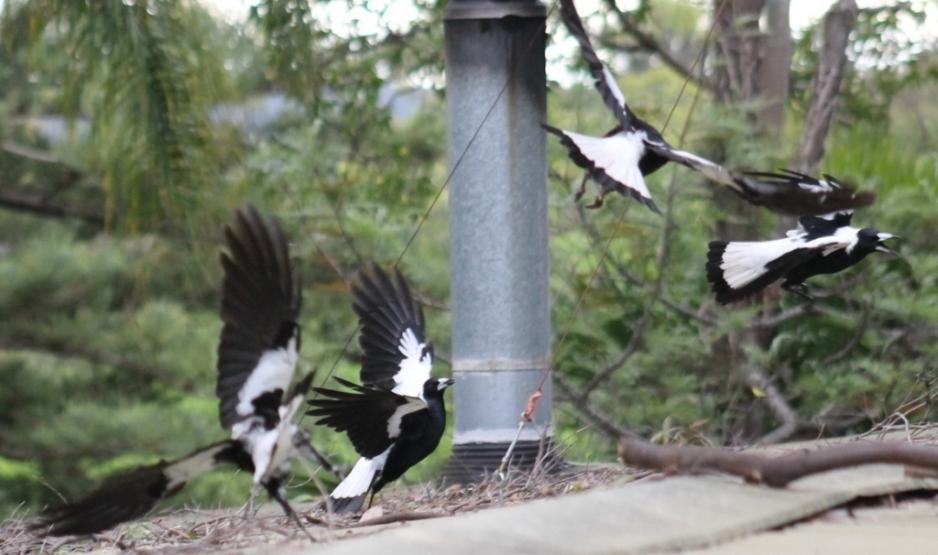
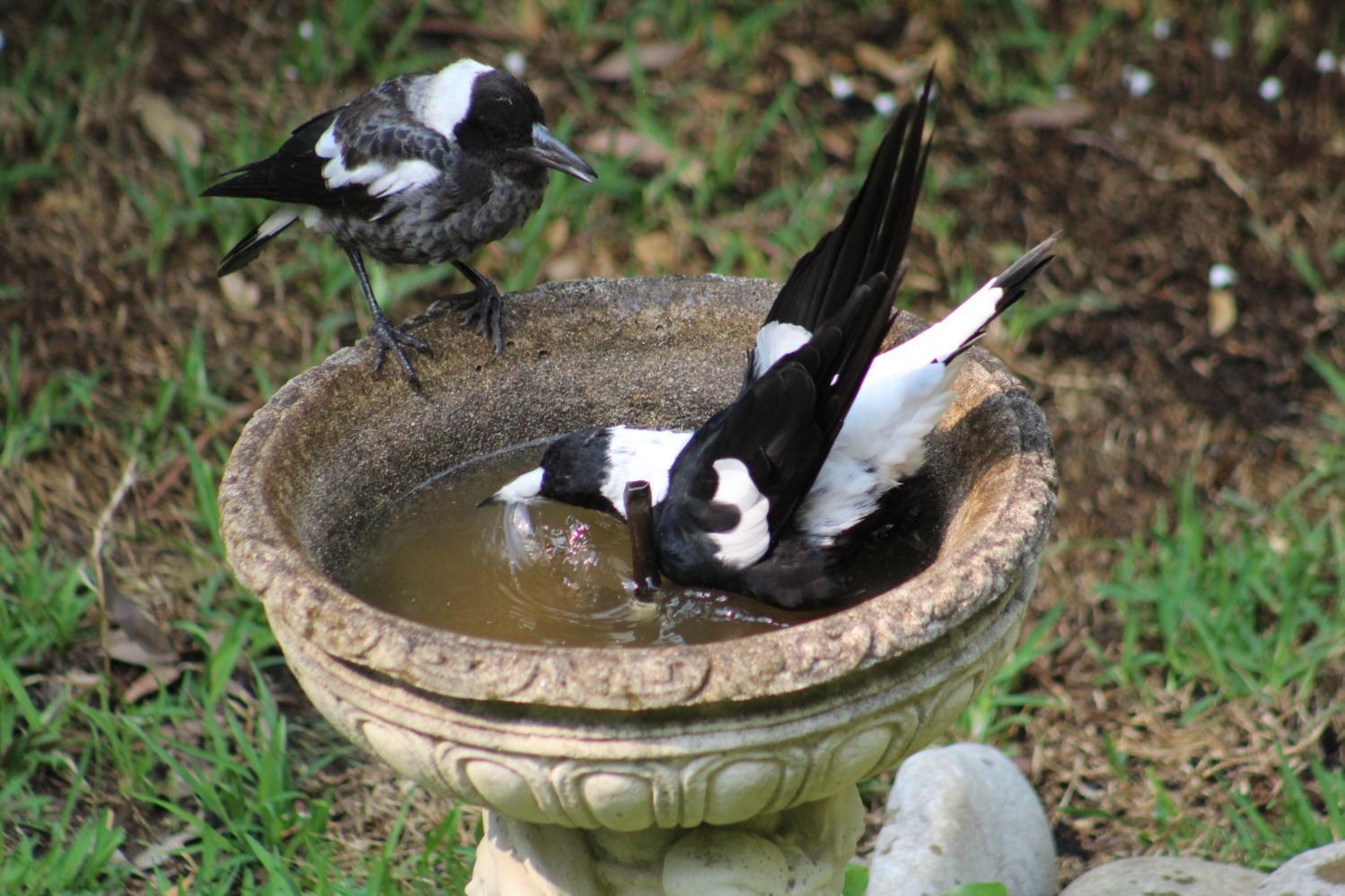
Friends Of Narrabeen Lagoon Catchment August Newsletter, Forum & 2021 AGM
.jpg?timestamp=1627676810014)
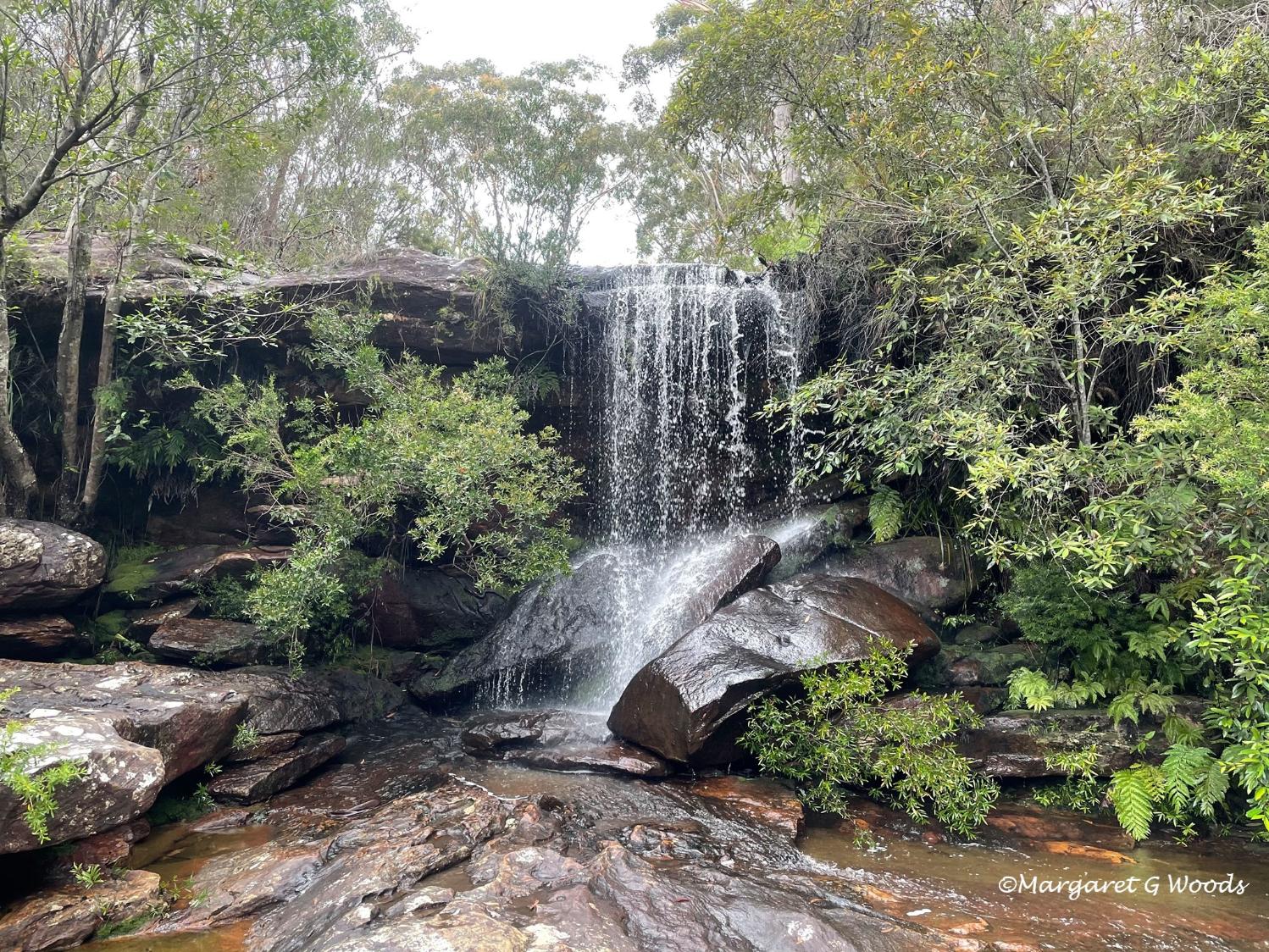
Discussion Paper To Encourage Views On Proposed Planning Controls
- improved controls for development near waterways, foreshores, wetlands and riparian lands;
- more water sensitive urban design and greater tree canopy;
- performance standards for net-zero carbon emission buildings;
- reducing areas for permitted dual occupancy, boarding houses and seniors’ housing to reduce inappropriate development in sensitive locations;
- provisions to restrict large scale retail in small retail centres.
Echidna Breeding Season Commences
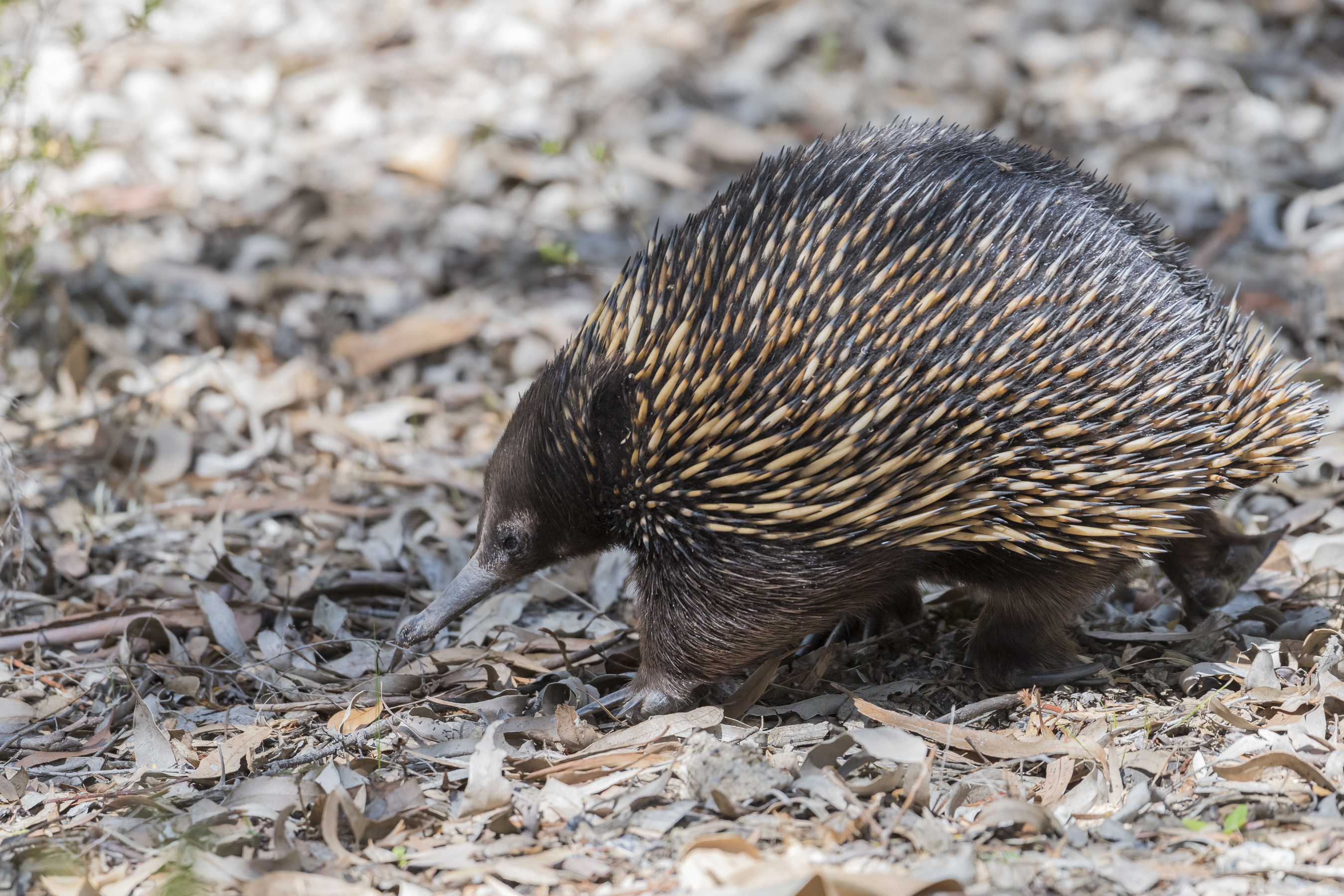
Reinstate The Marine Reserve From Rock Pool “Kiddies Corner” South Palm Beach: Petition
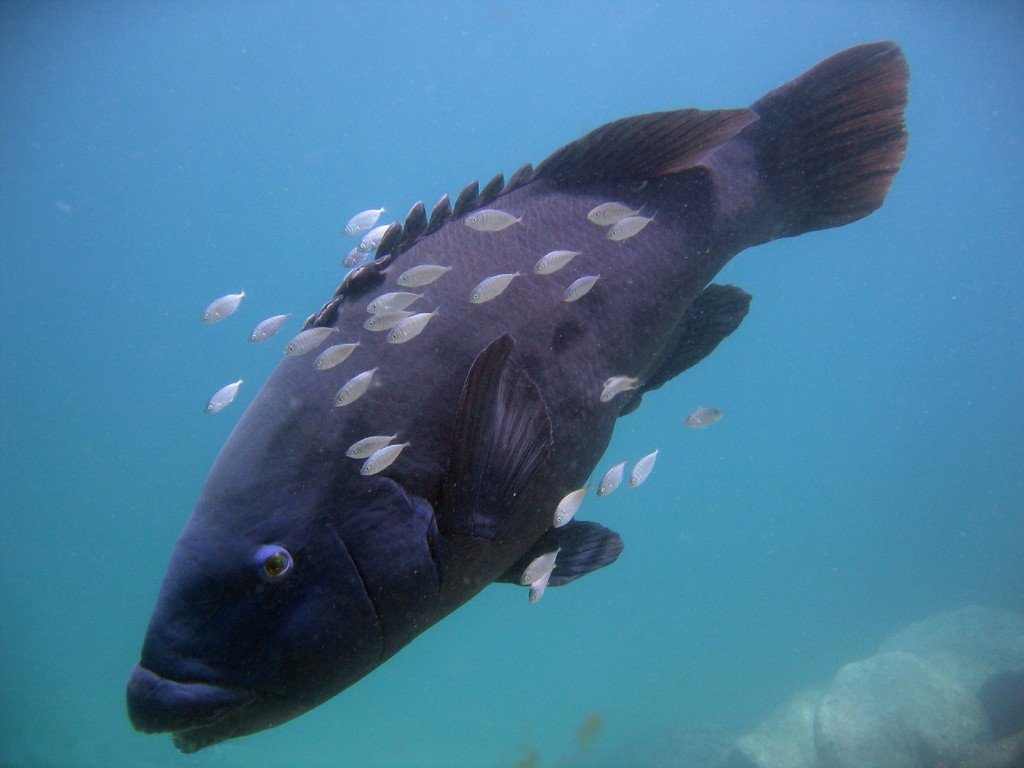
NSW Sustainability Awards Now Open For Entry
- NSW Net Zero Action Award
- NSW Biodiversity Award
- NSW Circular Transition Award
- NSW Clean Technology Award
- NSW Large Business Transformation Award
- NSW Small to Medium Business Award
- NSW Youth as our Changemakers Award
- Minister's Young Climate Champion Award
- NSW Clean Technology Award: Recognises outstanding initiatives by an organisation or organisations in collaboration that show- case efficient resources through renewable energy, low emissions technology, and appreciable pollution reduction (beyond compliance) of Australia's water, air, and land.
- NSW Biodiversity Award: Recognises outstanding initiatives by an organisation or organisations in collaboration that protect our habitat, flora and/or fauna to ensure Australia's ecosystems are secured and flourish for future generations.
- NSW Circular Transition Award: Recognises outstanding achievements in innovative design in waste and pollution systems and products, through to regenerating strategies. The award will go to a company that has adopted a technology, initiative or project that is helping the business move from a linear to a circular model.
- NSW Large Business Transformation Award: Recognises outstanding achievements that demonstrate business and values alignment with multiple UN Sustainable Development Goals and by integrating sustainability principles and practices across business activities.
- NSW Youth as our Changemakers Award: Recognises young innovators aged between 18-35 years, who bring fresh perspectives, bold ideas and compelling initiatives that align with any or the multiple UN SDG's.
- NSW Net Zero Action Award: Recognises organisations, (company, business association, NGOs) that can demonstrate a tangible program or initiative that evidences transition toward a 1.5-Degree goal, through a publicly communicated net zero commitment, plus data, disclosures and investments to support it.
- NSW Small to Medium Business Award: Recognises outstanding achievements that demonstrate business and values alignment with multiple UN Sustainable Development Goals and by integrating sustainability principles and practices across business activities.
- Minister's Young Climate Champion Award: The Minister's Young Climate Champion Award recognises young innovators aged under 18 years who bring bold ideas for a safe and thriving climate future that align with any of the UN SDGs. Young and passionate minds who have taken outstanding actions that benefit the sustainability of their communities and help address climate change will be showcased in this award, which is a celebration of young people with drive, commitment and a passion for sustainability and the environment.
Bandicoots Return To Sturt National Park After More Than A Century
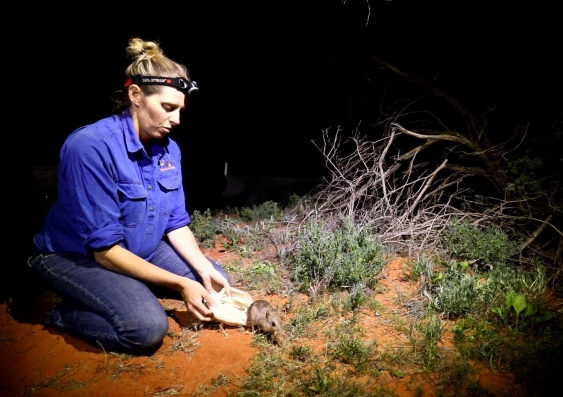
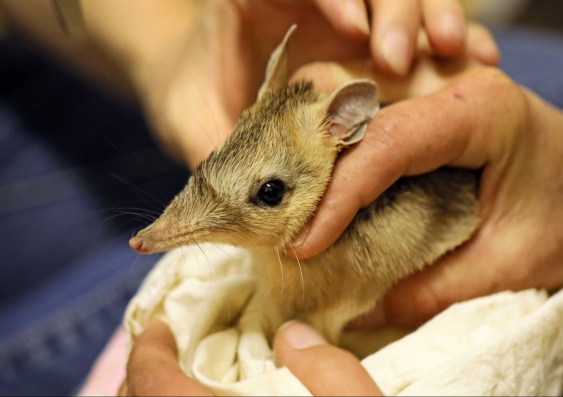
Ground Breaking Recycling Projects To Roll Out Across NSW
- Establishment of a new $40m regional Materials Recovery Facility (MRF) to recycle waste glass, plastic, tyres and paper and cardboard in Newcastle.
- A mobile plastic processing facility to process almost 1,000 tonnes of plastic each year.
- New state-of-the-art infrastructure in Erskine Park to reprocess 3,200 tonnes of used Off The Road (OTR) tyres for use in road construction and manufactured rubber-based products.
- Expand a Wetherill Park plant that turns paperboard beverage containers collected through container deposit schemes and coffee cups collected through the ‘Simply Cups’ recycling program into sustainable building products as a substitute for plaster and particle boards.
- Upgrading glass processing in western Sydney to process an additional 50,000 tonnes of glass each year that will increase the kerbside glass recovery from 53 percent to 60 per cent.
- Upgrading moulding equipment at Sulo’s Somersby facility to recycle old kerbside bins and bottle caps back into mobile garbage bins, creating circular kerbside bins.
- Expanding Australian Recycled Plastics facility at Narrabri to allow both PET and HDPE/PP lines to run simultaneously and at full capacity, processing up 9,300 tonnes per annum.
Sustainability Of Energy Supply And Resources In NSW
Whitehaven Fined “Chicken Scratch” For Environmental Vandalism At NW NSW Coal Mine
NSW EPA Reminds Residents To Be Safe Around Lead In Homes And Gardens
Newcastle Community Committee Meets To Consider Environment Issues
Man Charged Over Threats To Fisheries Officer
- Obstructing a Fisheries Officer in the exercising of function – failing to allow examination of fishing gear (Sequence 1) – fined $2,000.
- Threatening a Fisheries Officer – with a weapon, being an axe handle with a metal spike on the end (Sequence 2) – convicted and imposed a community corrections order for 12 months.
- Obstruction of a Fisheries Officer in the exercising of function – failing to allow seizure of a weapon used to threaten a Fisheries Officer (Sequence 3); and
- Failing to comply with requirement to provide information – fail to state name and address (Sequence 4) - fined $500.
Reminder: New Yabby Net Rules Are Now In Place
Restrictions In Place To Protect Endangered Grey Nurse Sharks
EPA Fines Dangerous Goods Transporter For Signage Breach
- Using GPS monitoring which can include “geofencing” prohibited routes
- Reviewing toll records for the vehicles
- Looking for drivers who achieve substantially faster delivery times (indicating the use of faster, more direct motorway tunnels which are not allowed vs surface roads)
- Providing specific training on prohibited routes and what action to take if a driver has mistakenly found themselves on a prohibited route
- Regular “toolbox talks” to remind drivers of the rules and an opportunity to ask questions
- Having internal processes that require drivers to report if they have used a prohibited route
- Undertaking random internal audits of driver behaviour and activities.
This is the most sobering report card yet on climate change and Earth’s future. Here’s what you need to know
Pep Canadell, CSIRO; Joelle Gergis, Australian National University; Malte Meinshausen, The University of Melbourne; Mark Hemer, CSIRO, and Michael Grose, CSIROEarth has warmed 1.09℃ since pre-industrial times and many changes such as sea-level rise and glacier melt are now virtually irreversible, according to the most sobering report yet by the Intergovernmental Panel on Climate Change (IPCC).
The report also found escape from human-caused climate change is no longer possible. Climate change is now affecting every continent, region and ocean on Earth, and every facet of the weather.
The long-awaited report is the sixth assessment of its kind since the panel was formed in 1988. It will give world leaders the most timely, accurate information about climate change ahead of a crucial international summit in Glasgow, Scotland in November.
The IPCC is the peak climate science body of the United Nations and the World Meteorological Organization. It is the global authority on the state of Earth’s climate and how human activities affect it. We are authors of the latest IPCC report and have drawn from the work of thousands of scientists from around the world to produce this new assessment.
Sadly, there is hardly any good news in the 3,900 pages of text released today. But there is still time to avert the worst damage, if humanity chooses to.
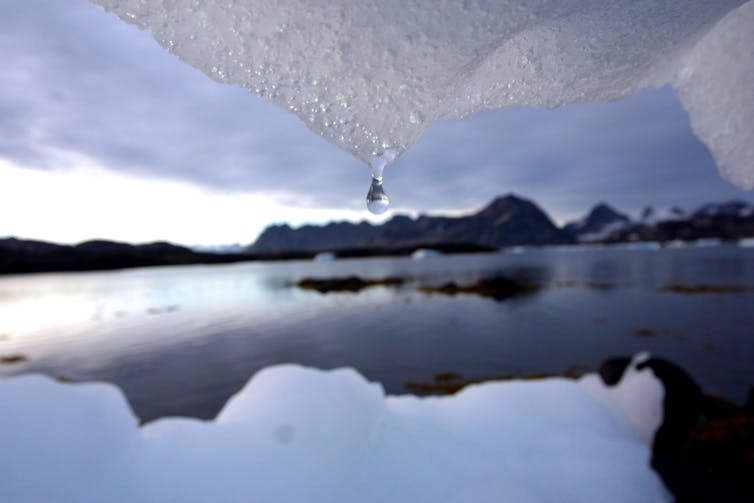
It’s Unequivocal: Humans Are Warming The Planet
For the first time, the IPCC states unequivocally — leaving absolutely no room for doubt – humans are responsible for the observed warming of the atmosphere, lands and oceans.
The IPCC finds Earth’s global surface temperature warmed 1.09℃ between 1850-1900 and the last decade. This is 0.29℃ warmer than in the previous IPCC report in 2013. (It should be noted that 0.1℃ of the increase is due to data improvements.)
The IPCC recognises the role of natural changes to the Earth’s climate. However, it finds 1.07℃ of the 1.09℃ warming is due to greenhouse gases associated with human activities. In other words, pretty much all global warming is due to humans.
Global surface temperature has warmed faster since 1970 than in any other 50-year period over at least the last 2,000 years, with the warming also reaching ocean depths below 2,000 metres.
The IPCC says human activities have also affected global precipitation (rain and snow). Since 1950, total global precipitation has increased, but while some regions have become wetter, others have become drier.
The frequency and intensity of heavy precipitation events have increased over most land areas. This is because the warmer atmosphere is able to hold more moisture — about 7% more for each additional degree of temperature — which makes wet seasons and rainfall events wetter.

Higher Concentrations Of CO₂, Growing Faster
Present-day global concentrations of atmospheric carbon dioxide (CO₂) are higher and rising faster than at any time in at least the past two million years.
The speed at which atmospheric CO₂ has increased since the industrial revolution (1750) is at least ten times faster than at any other time during the last 800,000 years, and between four and five times faster than during the last 56 million years.
About 85% of CO₂ emissions are from burning fossil fuels. The remaining 15% are generated from land use change, such as deforestation and degradation.
Concentrations of other greenhouse gases are not doing any better. Both methane and nitrous oxide, the second and third biggest contributors to global warming after CO₂, have also increased more quickly.
Methane emissions from human activities largely come from livestock and the fossil fuel industry. Nitrous oxide emissions largely come from the use of nitrogen fertiliser on crops.
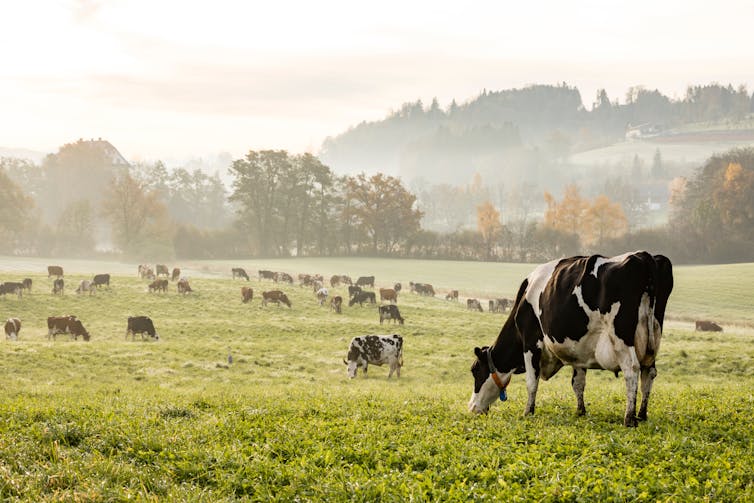
Extreme Weather On The Rise
Hot extremes, heatwaves and heavy rain have also become more frequent and intense across most land regions since 1950, the IPCC confirms.
The report highlights that some recently observed hot extremes, such as the Australian summer of 2012–2013, would have been extremely unlikely without human influence on the climate.
Human influence has also been detected for the first time in compounded extreme events. For example, incidences of heatwaves, droughts and fire weather happening at the same time are now more frequent. These compound events have been seen in Australia, Southern Europe, Northern Eurasia, parts of the Americas and African tropical forests.
Oceans: Hotter, Higher And More Acidic
Oceans absorb 91% of the energy from the increased atmospheric greenhouse gases. This has led to ocean warming and more marine heatwaves, particularly over the past 15 years.
Marine heatwaves cause the mass death of marine life, such as from coral bleaching events. They also cause algal blooms and shifts in the composition of species. Even if the world restricts warming to 1.5-2℃, as is consistent with the Paris Agreement, marine heatwaves will become four times more frequent by the end of the century.
Melting ice sheets and glaciers, along with the expansion of the ocean as it warms, have led to a global mean sea level increase of 0.2 metres between 1901 and 2018. But, importantly, the speed sea level is rising is accelerating: 1.3 millimetres per year during 1901-1971, 1.9mm per year during 1971-2006, and 3.7mm per year during 2006-2018.
Ocean acidification, caused by the uptake of CO₂, has occurred over all oceans and is reaching depths beyond 2,000m in the Southern Ocean and North Atlantic.

Many Changes Are Already Irreversible
The IPCC says if Earth’s climate was stabilised soon, some climate change-induced damage could not be reversed within centuries, or even millennia. For example, global warming of 2℃ this century will lead to average global sea level rise of between two and six metres over 2,000 years, and much more for higher emission scenarios.
Globally, glaciers have been synchronously retreating since 1950 and are projected to continue to melt for decades after the global temperature is stabilised. Meanwhile the acidification of the deep ocean will remain for thousands of years after CO₂ emissions cease.
Read more: We mapped the world's frozen peatlands – what we found was very worrying
The report does not identify any possible abrupt changes that would lead to an acceleration of global warming during this century – but does not rule out such possibilities.
The prospect of permafrost (frozen soils) in Alaska, Canada, and Russia crossing a tipping point has been widely discussed. The concern is that as frozen ground thaws, large amounts of carbon accumulated over thousands of years from dead plants and animals could be released as they decompose.
The report does not identify any globally significant abrupt change in these regions over this century, based on currently available evidence. However, it projects permafrost areas will release about 66 billion tonnes of CO₂ for each additional degree of warming. These emissions are irreversible during this century under all warming scenarios.
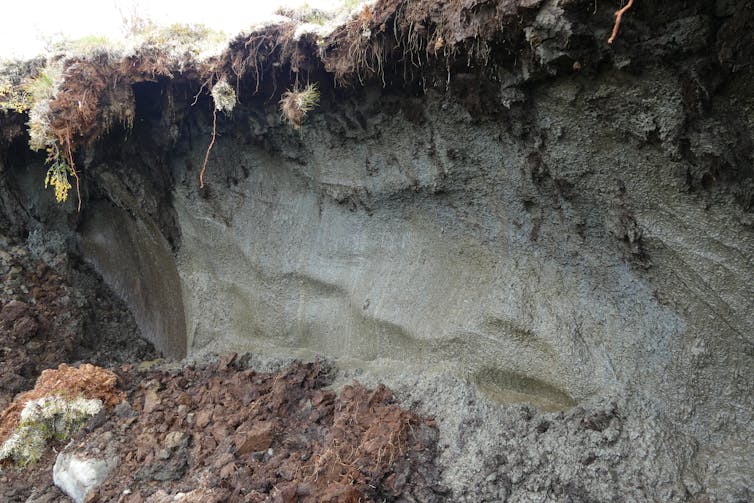
How We Can Stabilise The Climate
Earth’s surface temperature will continue to increase until at least 2050 under all emissions scenarios considered in the report. The assessment shows Earth could well exceed the 1.5℃ warming limit by early 2030s.
If we reduce emissions sufficiently, there is only a 50% chance global temperature rise will stay around 1.5℃ (including a temporary overshoot of up to 0.1℃). To get Earth back to below 1.5℃ warming, CO₂ would need to be removed from the atmosphere using negative emissions technologies or nature-based solutions.
Global warming stays below 2℃ during this century only under scenarios where CO₂ emissions reach net-zero around or after 2050.
Read more: We've made progress to curb global emissions. But it's a fraction of what's needed
The IPCC analysed future climate projections from dozens of climate models, produced by more than 50 modelling centres around the world. It showed global average surface temperature rises between 1-1.8℃ and 3.3-5.7℃ this century above pre-industrial levels for the lowest and highest emission scenarios, respectively. The exact increase the world experiences will depend on how much more greenhouse gases are emitted.
The report states, with high certainty, that to stabilise the climate, CO₂ emissions must reach net zero, and other greenhouse gas emissions must decline significantly.
We also know, for a given temperature target, there’s a finite amount of carbon we can emit before reaching net zero emissions. To have a 50:50 chance of halting warming at around 1.5℃, this quantity is about 500 billion tonnes of CO₂.
At current levels of CO₂ emissions this “carbon budget” would be used up within 12 years. Exhausting the budget will take longer if emissions begin to decline.
The IPCC’s latest findings are alarming. But no physical or environmental impediments exist to hold warming to well below 2℃ and limit it to around 1.5℃ – the globally agreed goals of the Paris Agreement. Humanity, however, must choose to act.
Click here to read more of The Conversation’s coverage of the IPCC report![]()
Pep Canadell, Chief research scientist, Climate Science Centre, CSIRO Oceans and Atmosphere; and Executive Director, Global Carbon Project, CSIRO; Joelle Gergis, Senior Lecturer in Climate Science, Australian National University; Malte Meinshausen, A/Prof., School of Earth Sciences, The University of Melbourne; Mark Hemer, Principal Research Scientist, Oceans and Atmosphere, CSIRO, and Michael Grose, Climate projections scientist, CSIRO
This article is republished from The Conversation under a Creative Commons license. Read the original article.
With the release of a terrifying IPCC report, Australia must face its wilful political blindness on climate

I remember the acute frustration of watching one of the US news feeds on September 11, 2001 — 20 years ago next month.
With the stricken twin towers smoking away in the background, the news anchors described the heroic rescue mission going on behind them, continuing for several excruciating moments after one tower had simply ceased to exist — a fact terrifyingly obvious to viewers.
“It’s gone” I yelled at the TV helplessly, “there is no rescue!”.
The other building would soon follow as the full horror went from unimaginable to undeniable in a single morning.
Many Australians feel a similar frustration – this time chronic - at the refusal of their government to “turn around” to face what’s clear to everyone else, a galloping climate emergency which portends death, suffering and species loss on a planetary scale.
Yet, as the evidence has accumulated, and the new IPCC report reinforces it, Australia has carved out a name for itself as a global laggard — grouped with denialist authoritarian states like Russia, China, and Saudi Arabia.
And it has done so by re-interpreting the global climate evidence as just another domestic political argument – an opportunity for creating winners and losers and profiting from the electoral dividends yielded.
The 2050 Pantomime
Ever wonder why an Australian political class steeped in short-termism is so animated about 2050 — a date way beyond the horizons of those currently in power?
Partly it is because if an economy is to genuinely commit to emitting net-zero carbon by 2050, the hard work of adjustment needs to commence immediately. But mostly it is that 2050 has become a useful distraction from the here-and-now.

And it is on this faux battleground that Prime Minister Scott Morrison has excelled in restricting not just his own rhetorical manoeuvrings, but increasingly, those of his opponents. Indeed, Morrison has achieved a remarkable double by simultaneously reducing 2050 to mere symbol, while also framing it as the only battleground on which the climate contest can be fought.
This way, he either wins, or he doesn’t lose, because the stakes are rendered so distant and so low as to not affect voting preferences appreciably.
From Waving A Lump Of Coal To Glasgow
Since appearing at the National Press Club in February 2021, the man who once brandished a lump of coal in parliament has moved to assure voters he now wants Australia to get to net-zero “as soon as possible, and preferably by 2050”.
Though intentionally vague, this putative hardening from merely “as soon as possible” was treated as progress by many in the press gallery, which is arguably too aware of Morrison’s partyroom arithmetic and thus overly inclined to see the climate challenge as his rather than the country’s.
(This is this same commentariat, by the way, that gave Morrison an unequalled level of authority inside the partyroom following his “miracle” election victory in 2019.)
Since that February address, most observers have assumed Morrison would find a way to get his government to the 2050 commitment ahead of the Glasgow COP26 summit in November. That would mean strong-arming climate-sceptic Liberals, as well as the much harder task of wrangling the Nationals.
The Joyce Factor
But if anything, that task has steepened in recent months with the election of Barnaby Joyce as Nationals leader and deputy prime minister.
As Joyce (speaking in the third person) told the Australian Financial Review in July:
The likelihood of Joyce getting endorsement from his party room to agree to net zero is zero.
And if Joyce was to come back to the party room and said ‘I had a really interesting conversation, I’ve just agreed to net zero’, then his prospects of getting out of that room as a leader would be zero.
That such unvarnished self-interest flies as a legitimate policy argument says everything about the vapid quality of the climate change debate in Australia.
Labor’s Retreat
In truth, Morrison is comfortable keeping the argument on 2050 anyway, knowing the date is as abstract and intangible to many voters as the dangerous build-up of atmospheric carbon dioxide is visible to the naked eye.
And why not? Labor has already retreated from its last election pledge of a 45% cut by 2030, hounded into meekness by Morrison’s 2019 scare campaign alleging runaway job losses and lower economic growth from Labor’s rapid adjustment.

Labor’s new policy will be unveiled closer to the election, but it is not expected to be as ambitious, even though since 2019, the rest of the developed world has embraced targets at or beyond this scale.
In a sign a milder policy is in the offing, Labor insiders plead the previous 45%-by-2030 policy had been set in the middle of the last decade and that commencing that reduction from 2022 is unrealistic. Yet, the first IPCC report for seven years warns the 1.5℃ warming threshold will now be reached as early as 2040, which probably means Labor should, in fact, propose to go harder.
There’s no sign of the government going harder either. Asked on Tuesday if Australia would set out more ambition in light of the IPCC warning, Morrison said,
we need more performance, we need more technology, and no one will be matching our ambition for a technology-driven solution.
It was an answer perfectly consistent with his past mantra of “technology, not taxes”.
Thus, it was also an answer that was perfectly inconsistent with the facts set out by the world scientific community. Facts to which Australia is yet to turn its full face.![]()
Mark Kenny, Professor, Australian Studies Institute, Australian National University
This article is republished from The Conversation under a Creative Commons license. Read the original article.
Australia Must Stop More Climate Damage
“It is unequivocal that human influence has warmed the atmosphere, ocean and land. Widespread and rapid changes in the atmosphere, ocean, cryosphere and biosphere have occurred.”
- Since 1900, human activity has been responsible for 1.1°C of global warming.
- If 1.5°C of global warming is exceeded, there will be more heatwaves, longer warm seasons and shorter cold seasons.
- If 2°C of global warming is exceeded, heat extremes would reach “critical tolerance thresholds” for agriculture and human health.
- Australia will experience more intense and longer bushfires, more heatwaves and greater ocean acidification and warming.
- Carbon dioxide emissions remain the primary driver of climate change, along with other greenhouse gases such as methane (‘natural gas’).
- Becoming a global clean energy superpower by 2031 by replacing coal, gas and uranium exports with a green hydrogen, steel and aluminium industry.
- Powering energy independent communities with renewable electricity, and replacing coal and gas-burning power stations with renewable energy storage.
- Replacing carbon-emitting transport with more accessible, renewably-powered public transit, subsidised electric vehicles and nationwide electric vehicle charging stations.
- Moving bank and superannuation fund investments in fossil fuel projects to renewable industries and jobs, and ending the connection between political parties and fossil fuel industries by reforming political donations and halting subsidies to polluters.
- Creating strong national nature-protection laws and an independent national regulator that stop Australia’s extinction crisis and preserve valuable natural carbon sinks such as bushland, wetlands and forests.
IPCC Report: 2050 Is Too Late
- Send our sunshine around the world - Australia can become a global clean energy superpower in the next decade by replacing coal, gas and uranium exports and use with renewable energy. We have plentiful sun and wind. A valuable export industry that secures and creates great jobs through manufactured products like green hydrogen, steel and aluminium, is within our reach.
- Create energy independent communities - Power schools, hospitals, government offices, public and social housing, remote Indigenous communities, sporting clubs, halls and libraries with affordable, clean energy by 2025, and replace coal and gas-burning power stations with renewable energy and storage by 2030.
- Travel clean - Take pollution out of transport. Save our health and climate with more accessible buses and trains running on clean energy; make electric vehicles cheaper; and install electric vehicle charging stations across the country.
- Move the money - Banks and super funds must move our money from funding polluting coal, gas and nuclear projects to clean renewable powered industries and jobs. Political parties must stop accepting dirty donations and giving public funding to coal and gas companies and ban big political donations to reduce their influence on decision making.
- Save our big backyard - Create strong national nature protection laws that stop Australia’s worsening extinction crisis, and support nature as a climate solution. New laws must be enforced by an independent regulator. Our forests, wetlands and bushlands store greenhouse gases, provide homes for our unique animals and birds, and are places where people restore and revive.
Fossil fuel misinformation may sideline one of the most important climate change reports ever released
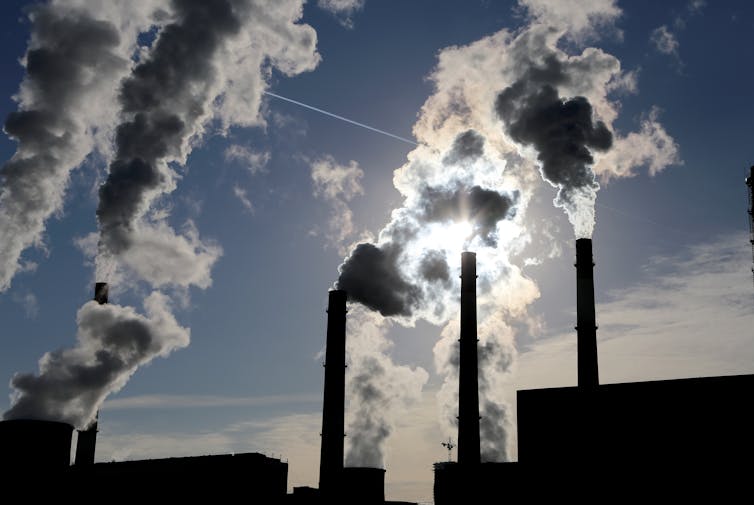
This week’s landmark report on the state of the climate paints a sobering picture. The Intergovernmental Panel on Climate Change (IPCC) concluded that, without deep and immediate cuts to greenhouse gas emissions, the world is very likely headed for climate catastrophe.
In November, world leaders will gather in Glasgow for the latest round of United Nations climate talks. It’s the most crucial round of climate negotiations since those which led to the Paris Agreement in 2015.
The question is: will governments around the world now listen to the climate science? Or will misinformation campaigns backed by vested interests continue to delay action?
If we’re to avert a climate disaster, we must not underestimate the power of climate misinformation campaigns to undermine the IPCC findings and ensure governments continue to ignore the science.

A History Of Heeding The Science
Scrutiny of Australia’s climate policies will be particularly harsh at the Glasgow meeting, given the Morrison government’s failure to implement substantive policies to reduce emissions. We can expect renewed international pressure on Australia to commit to net-zero emissions by 2050 and set out a national plan to decarbonise the economy this decade.
For those who believe in the power of science, the failure of world leaders to act urgently is frustrating, to say the least.
We have acted on the concerns of scientists in the past. In fact, it was scientists such as NASA’s James Hansen who put climate change on the agenda back in 1988, triggering international negotiations.
Scientific concern over the growing hole in the ozone layer prompted the 1987 Montreal Protocol, an international agreement to curb the use of ozone-depleting substances.
And of course, scientific advice is guiding the government response to the COVID-19 pandemic.
There are many reasons why the calls of climate scientists are not being heeded at present. But one factor has been particularly successful in delaying climate action: scientific misinformation campaigns.
These campaigns damage public understanding of science, erode trust in research findings, and undermine evidence-based policy.
Read more: A brief history of fossil-fuelled climate denial

Muddying The Waters
Research has shown climate misinformation campaigns are often backed by corporate interests which stand to lose if the world transitions to a cleaner energy future.
Such a future could bring incredible benefits to Australia – a country with some of the world’s best solar and wind resources.
The campaigns have wrought untold damage to the public debate on climate science. These corporations have funded industry associations, think tanks and front groups (even including paid actors) to mobilise a counter movement to climate action.
Examples of the phenomenon abound. In the United States, oil and gas giant ExxonMobil reportedly knew of climate change 40 years ago, but funded climate deniers for decades.
Reports emerged last week that Facebook failed to prevent a climate misinformation campaign by the oil and gas industry during last year’s US presidential election.
The war against climate science has been waged in Australia, too. Researchers and journalists have described the lengths the oil, gas and coal industries have gone to challenge the scientific consensus on climate change, and to kill off policies put in place to limit emissions.
Australian media companies such as News Corp have also been criticised for downplaying the significance of the climate crisis. Little wonder, then, that Australian news consumers are far more likely to believe climate change is “not at all” serious compared to news users in other countries.

Calling Out Misinformation
The latest IPCC report was five years in the making. It involved 234 leading scientists from more than 60 countries, who rigorously assessed more than 14,000 research papers to produce their synthesis. The result is the most authoritative, reliable report on the state of Earth’s climate since the last IPCC report of its kind in 2013.
But as the history of climate action has shown, incontrovertible science is not enough to shift the needle – in large part due to climate misinformation which deceives the public and weakens pressure on governments to act.
We must call out attempts by those who seek to delay climate action in the name of profit – and then counter those attempts. As the IPCC has shown this week, further delay equals catastrophe.
Read more: We have the vaccine for climate disinformation – let's use it ![]()
Christian Downie, Associate professor, Australian National University
This article is republished from The Conversation under a Creative Commons license. Read the original article.
The Murrumbidgee River’s wet season height has dropped by 30% since the 1990s — and the outlook is bleak
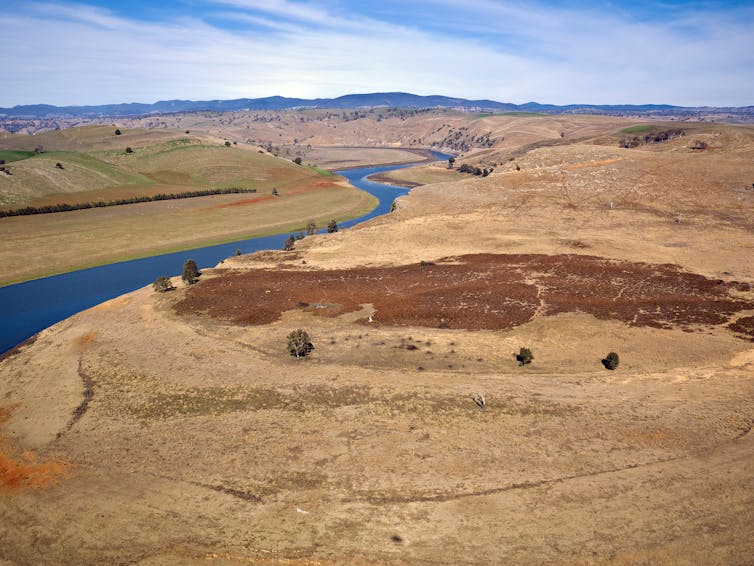
The Murray-Darling Basin is Australia’s biggest agricultural region, producing almost 40% of the national food supply during the growing season from April to September. It’s filled with criss-crossing rivers, wetlands and lakes farmers rely on for crops, and it’s home to a range of freshwater wildlife, many of which are under threat.
But our new research found climate change since the 1990s has drastically reduced the amount of water available in the southern part of the basin.
The height of the Murrumbidgee River — the third longest in Australia and highly valued for irrigation and hydro-electricity — has dropped by about 30% during the growing season. This is a loss of approximately 300 million litres per day that would normally flow past Wagga Wagga, New South Wales — the same as six days of water use in the City of Melbourne.
The findings follow a major report the Intergovernmental Panel on Climate Change released on Monday, which found much of Australia will become more arid as the world warms. This will bring reduced river flows, mass tree deaths, more droughts and drier soils.
The viability of the basin is at stake. Continued drying and warming in Australia will cause water availability to decline even further, deepening the hurt for communities, businesses, animals and the environment. Any decisions about the competing interests of agriculture and the environment must keep these global warming impacts front of mind.
What We Found
The southern Murray-Darling Basin occupies the southern half of NSW and northern Victoria. It receives most of its water from rain in the cooler months that fills dams, with any overflow spilling into the floodplains.
But our research shows rainfall in April to May has significantly decreased which, in turn, has caused the net inflows to the Murrumbidgee River catchment in the southern basin to decrease. This includes in the main dams of Burrinjuck and Blowering in the upper part of the catchment, and downstream river heights.
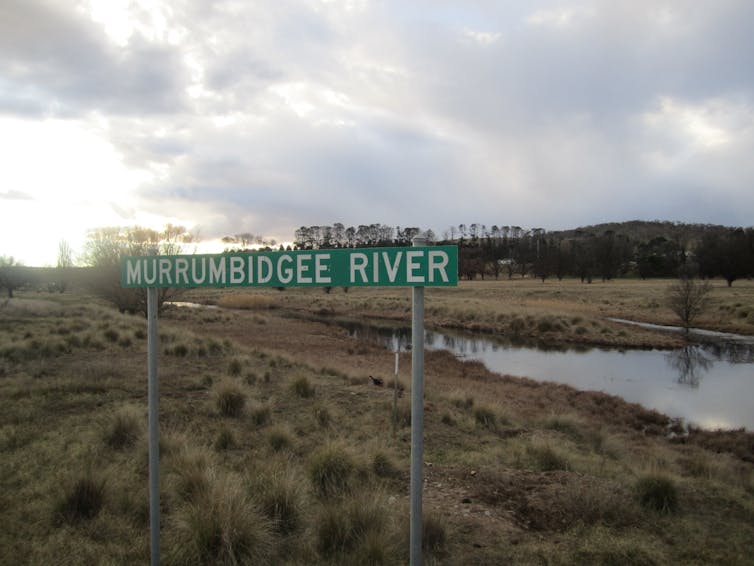
The Murrumbidgee River catchment is approximately 84,000 square kilometres, or about 8% of the basin. It encompasses a complex series of wetlands and floodplains, and supplies water for homes in many communities, including Wagga Wagga, Griffith and Leeton.
Using statistical analysis and machine learning, we found the Murrumbidgee River dropped from 3.5 metres in 1990 to 2.5 metres in 2019 during the cooler months. When you multiply this by the the length and breadth of the river, which stretches more than 1,400km, this is an enormous volume of water lost.
Given this drop is associated with the wettest months from April to September, the outlook for the warmer months between October and March is dismal. The number of days when the river ceases to flow will certainly increase.
Long, Difficult Droughts
Dam building and excessive irrigation are often behind decreased river flows across the Murray-Darling Basin. But in this case, we can point to decreased rainfall from climate change as the reason the Murrumbidgee River catchment is losing water.
Read more: We looked at 35 years of rainfall and learnt how droughts start in the Murray-Darling Basin
The Burrinjuck Dam was completed in 1928 and the Blowering Dam was completed in the 1960s. Until the early 1990s, the Murrumbidgee River used to regularly spill over the banks at Wagga Wagga and also further downstream at Hay, during the cool seasons.
Likewise, we didn’t identify irrigation as a major contributor, because more than 80% of irrigation occurs downstream of Wagga Wagga.
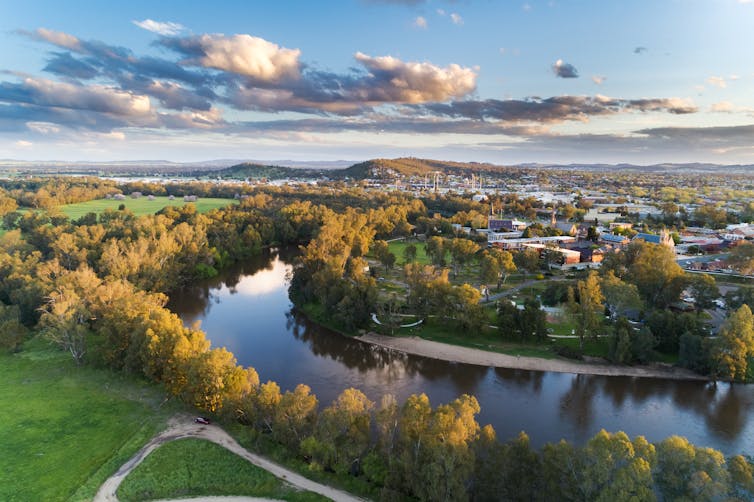
Global warming has accelerated in the latter half of last century, and particularly since the 1990s in Australia.
To see its effect in Australia, we need only look to the extended drought conditions since the mid-1990s in the basin, comprising the Millennium Drought (1997-2009) and the 2017-2019 drought. They were extreme, even compared to the historical Federation Drought between 1895 and 1903.
In 2006, the Australian newspaper reported that inflows to the nearby River Murray system between June and November were 610 gigalitres, “just 56 percent of the previously recorded low in 1902” when the Federation Drought was at its worst.
Climate Change Exacerbates Dry Years
But climate change doesn’t tell the whole story, there are also other factors at play driving the low rainfall trend in the basin. Namely, natural climate phenomena form over the ocean and bring wetter or drier weather to various parts of Australia.
One of these climate phenomena is the Indian Ocean Dipole (IOD), which brings wetter weather than normal from June to October when in its “negative” phase (in fact, the Bureau of Meteorology recently declared another negative IOD for Australia this year, the first in five years).
Read more: A wet winter, a soggy spring: what is the negative Indian Ocean Dipole, and why is it so important?
But in the last two decades there have been only two strongly negative-phase Indian Ocean Dipole (IOD) events affecting Australia. The current IOD phase is only moderately negative.
Climate drivers like this are entirely natural and have been occurring for thousands of years, but human-caused climate change exacerbates their influence. Generally, it makes dry seasons drier, and wet seasons wetter.
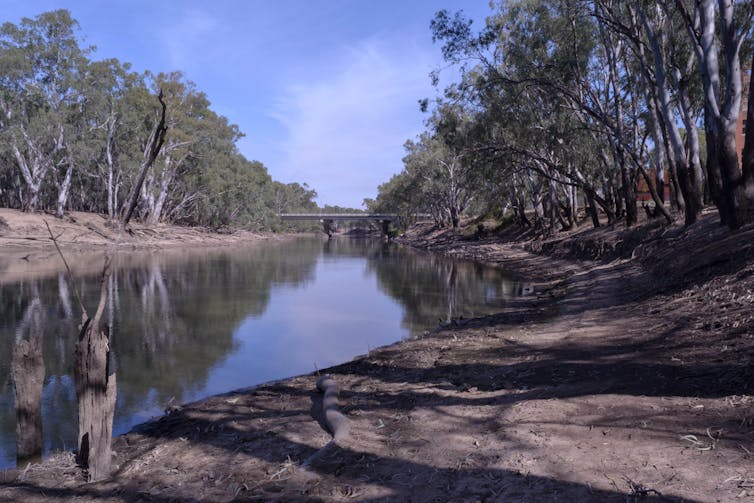
In April this year, devastating floods engulfed western Sydney. This resulted in the dams reaching nearly 100% capacity last month. However, the river height at Wagga Wagga is currently around 5.3m and this is still 2m below the minor flood level of 7.3m — too low to overflow into the surrounding floodplain.
And after years of little rain or snowmelt, evaporation accentuates the lack off run-off into dams and streams, because water needs to soak into dry catchments before significant run-off can occur.
Profoundly Disturbing Implications
The implications of our research are profoundly disturbing, because it means the economic, social and ecological sustainability of the Murrumbidgee River catchment is at stake.
Under climate change, we can expect further drying of wetlands and major losses of wildlife habitat. For example, the mid-Murrumbidgee and the Lowbidgee wetlands are listed as nationally significant, providing critical habitat for threatened frogs, such as the vulnerable southern bell frog.
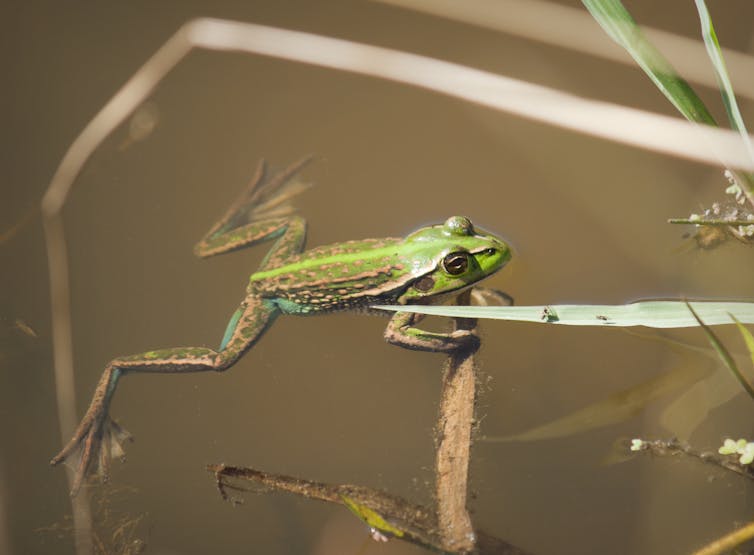
For farmers and communities, we can expect huge reductions in the amount of water allocated for irrigation. The ability for communities to survive these severe decreases in agricultural productivity will be tested.
The efficiency of farm practices is improving. But because of the continuing threat of drought conditions in a warming climate, there’s an urgent need to plan for further decreases in rainfall, and further unreliability of water supply.
Australia needs a new review of water availability and sustainability in the Murrumbidgee and other river systems in the southern Murray-Darling Basin.
Milton Speer, Visiting Fellow, School of Mathematical and Physical Sciences, University of Technology Sydney and Lance M Leslie, Professor, School of Mathematical And Physical Sciences, University of Technology Sydney
This article is republished from The Conversation under a Creative Commons license. Read the original article.
Bushcare In Pittwater
Where we work Which day What time
Avalon
Angophora Reserve 3rd Sunday 8:30 - 11:30am
Avalon Dunes 1st Sunday 8:30 - 11:30am
Avalon Golf Course 2nd Wednesday 3 - 5:30pm
Careel Creek 4th Saturday 8:30 - 11:30am
Toongari Reserve 3rd Saturday 9 - 12noon (8 - 11am in summer)
Bangalley Headland 2nd Sunday 9 to 12noon
Bayview
Winnererremy Bay 4th Sunday 9 to 12noon
Bilgola
North Bilgola Beach 3rd Monday 9 - 12noon
Algona Reserve 1st Saturday 9 - 12noon
Plateau Park 1st Friday 8:30 - 11:30am
Church Point
Browns Bay Reserve 1st Tuesday 9 - 12noon
McCarrs Creek Reserve Contact Bushcare Officer To be confirmed
Clareville
Old Wharf Reserve 3rd Saturday 8 - 11am
Elanora
Kundibah Reserve 4th Sunday 8:30 - 11:30am
 Mona Vale
Mona Vale Mona Vale Beach Basin 1st Saturday 8 - 11am
Mona Vale Dunes 2nd Saturday +3rd Thursday 8:30 - 11:30am
Newport
Bungan Beach 4th Sunday 9 - 12noon
Crescent Reserve 3rd Sunday 9 - 12noon
North Newport Beach 4th Saturday 8:30 - 11:30am
Porter Reserve 2nd Saturday 8 - 11am
North Narrabeen
Irrawong Reserve 2nd Saturday 2 - 5pm
Palm Beach
North Palm Beach Dunes 3rd Saturday 9 - 12noon
Scotland Island
Catherine Park 2nd Sunday 10 - 12:30pm
Elizabeth Park 1st Saturday 9 - 12noon
Pathilda Reserve 3rd Saturday 9 - 12noon
Warriewood
Warriewood Wetlands 1st Sunday 8:30 - 11:30am
Whale Beach
Norma Park 1st Friday 9 - 12noon
Western Foreshores
Coopers Point, Elvina Bay 2nd Sunday 10 - 1pm
Rocky Point, Elvina Bay 1st Monday 9 - 12noon
Gardens And Environment Groups And Organisations In Pittwater
Avalon Golf Course Bushcare Needs You
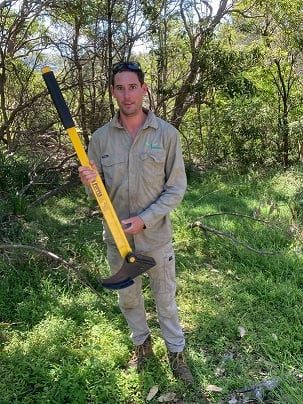
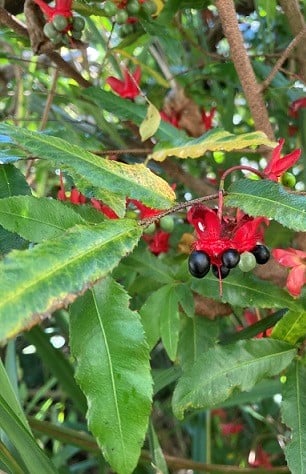
Pittwater Reserves

New Shorebirds WingThing For Youngsters Available To Download
A Shorebirds WingThing educational brochure for kids (A5) helps children learn about shorebirds, their life and journey. The 2021 revised brochure version was published in February 2021 and is available now. You can download a file copy here.
If you would like a free print copy of this brochure, please send a self-addressed envelope with A$1.10 postage (or larger if you would like it unfolded) affixed to: BirdLife Australia, Shorebird WingThing Request, 2-05Shorebird WingThing/60 Leicester St, Carlton VIC 3053.

 Shorebird Identification Booklet
Shorebird Identification Booklet
The Migratory Shorebird Program has just released the third edition of its hugely popular Shorebird Identification Booklet. The team has thoroughly revised and updated this pocket-sized companion for all shorebird counters and interested birders, with lots of useful information on our most common shorebirds, key identification features, sighting distribution maps and short articles on some of BirdLife’s shorebird activities.
The booklet can be downloaded here in PDF file format: http://www.birdlife.org.au/documents/Shorebird_ID_Booklet_V3.pdf
Paper copies can be ordered as well, see http://www.birdlife.org.au/projects/shorebirds-2020/counter-resources for details.
Download BirdLife Australia's children’s education kit to help them learn more about our wading birdlife
Shorebirds are a group of wading birds that can be found feeding on swamps, tidal mudflats, estuaries, beaches and open country. For many people, shorebirds are just those brown birds feeding a long way out on the mud but they are actually a remarkably diverse collection of birds including stilts, sandpipers, snipe, curlews, godwits, plovers and oystercatchers. Each species is superbly adapted to suit its preferred habitat. The Red-necked Stint is as small as a sparrow, with relatively short legs and bill that it pecks food from the surface of the mud with, whereas the Eastern Curlew is over two feet long with a exceptionally long legs and a massively curved beak that it thrusts deep down into the mud to pull out crabs, worms and other creatures hidden below the surface.
Some shorebirds are fairly drab in plumage, especially when they are visiting Australia in their non-breeding season, but when they migrate to their Arctic nesting grounds, they develop a vibrant flush of bright colours to attract a mate. We have 37 types of shorebirds that annually migrate to Australia on some of the most lengthy and arduous journeys in the animal kingdom, but there are also 18 shorebirds that call Australia home all year round.
What all our shorebirds have in common—be they large or small, seasoned traveller or homebody, brightly coloured or in muted tones—is that each species needs adequate safe areas where they can successfully feed and breed.
The National Shorebird Monitoring Program is managed and supported by BirdLife Australia.
This project is supported by Glenelg Hopkins Catchment Management Authority and Hunter Local Land Services through funding from the Australian Government’s National Landcare Program. Funding from Helen Macpherson Smith Trust and Port Phillip Bay Fund is acknowledged.
The National Shorebird Monitoring Program is made possible with the help of over 1,600 volunteers working in coastal and inland habitats all over Australia.
The National Shorebird Monitoring program (started as the Shorebirds 2020 project initiated to re-invigorate monitoring around Australia) is raising awareness of how incredible shorebirds are, and actively engaging the community to participate in gathering information needed to conserve shorebirds.
In the short term, the destruction of tidal ecosystems will need to be stopped, and our program is designed to strengthen the case for protecting these important habitats.
In the long term, there will be a need to mitigate against the likely effects of climate change on a species that travels across the entire range of latitudes where impacts are likely.
The identification and protection of critical areas for shorebirds will need to continue in order to guard against the potential threats associated with habitats in close proximity to nearly half the human population.
Here in Australia, the place where these birds grow up and spend most of their lives, continued monitoring is necessary to inform the best management practice to maintain shorebird populations.
BirdLife Australia believe that we can help secure a brighter future for these remarkable birds by educating stakeholders, gathering information on how and why shorebird populations are changing, and working to grow the community of people who care about shorebirds.
To find out more visit: http://www.birdlife.org.au/projects/shorebirds-2020/shorebirds-2020-program
Aussie Bread Tags Collection Points

Congratulations To The Rions - Unearthed Finalists
They Want You Back!

Desiderata
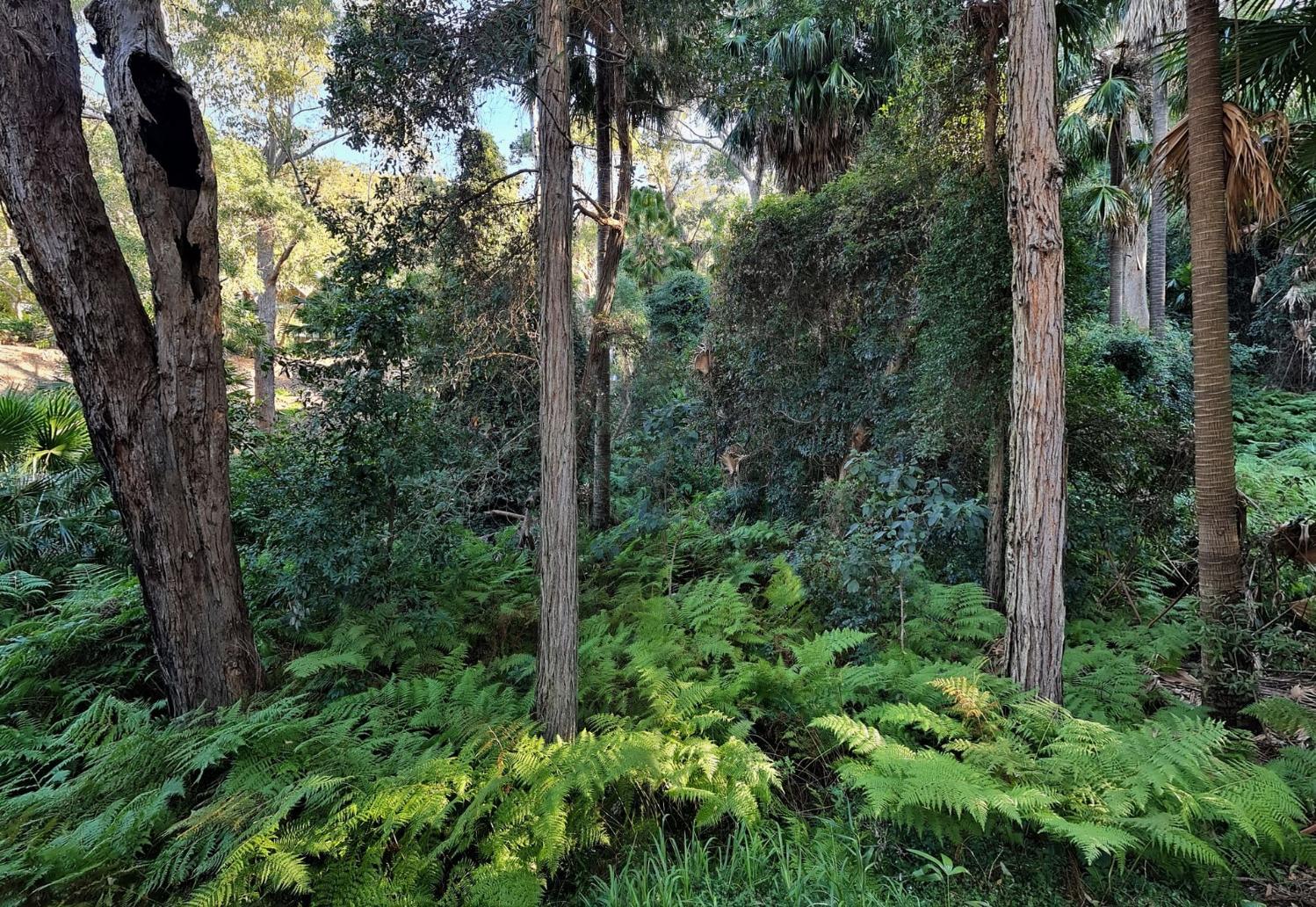
It’s OK if you have a little cry in lockdown. You’re grieving

If you are one of the millions of Australians in lockdown, you are not alone in feeling a range of emotions difficult to put into words.
Lockdown days are blurry, with time lost within our own four walls. These walls are far more visible than we’ve noticed before. Our obsession with the never-ending news cycle leaves us both informed and overwhelmed.
Whether it’s a day filled with anger and sadness or oscillating between feeling grateful and feeling lost, this lockdown feels harder than ever before.
And the sadness you may be feeling, but can’t quite put your finger on, could be something called “disenfranchised grief”.
Let’s Admit How Tough It’s Been
The COVID-19 pandemic has brought changes to our lives we never imagined. It has transformed the world we live in, our sense of safety, our behaviours and how connected we feel to our loved ones.
It’s highlighted the importance of human connection. We’ve learned a lack of connection with others can bring social pain, just as real as physical pain.
We’ve heard it’s OK to not be OK. Just last week, Lifeline recorded its busiest ever day, receiving 3,345 calls for help.
Read more: Lockdowns don't get easier the more we have them. Melbourne, here are 6 tips to help you cope
What Is Disenfranchised Grief?
The sadness you may be feeling can be down to a number of reasons. And feeling sad is not necessarily a sign of a mental health disorder. In fact feeling sad is one of the range of emotions that make us human, and has benefits.
But this doesn’t really explain the sadness many of us are feeling in lockdown right now — disenfranchised grief.
US researcher and professor Kenneth Doka introduced this notion about 30 years ago. He described disenfranchised grief as a loss not “openly acknowledged, socially validated, or publicly mourned”.
This fits with what we know about COVID-19, with stories of intangible losses including loss of safety, control, community, dignity and independence. Feelings of loss seem to envelope us wherever we turn.
Grandparents lost time with their grandkids; children have lost parts of their childhood, the milestones, the sleepovers, the ability to play with other children outside the home. Parents lost their village of support and parents-to-be lost their birthing plans.
Refugees and temporary migrants lost the safety of new-found homes, with the loss of jobs, accommodation and support services; citizens lost the predictability of being able to come home.
Students were robbed of in-person learning and parents were robbed of celebrating their children’s transition to the next phase in life. As well as birthdays and graduations, we lost funerals and weddings.
And when it came to grieving and loss, we lost access to the places and people that allow us to grieve collectively — our wider family and community, as well as places of worship.
Is It OK To Grieve About This?
Societal and cultural norms, including gender norms, dictate how we grieve. These norms allow us to mourn the death of a loved one. Yet it feels more challenging to mourn the loss of our way of life.
Grieving can feel complicated in a pandemic when others may have it worse. People may question whether it’s legitimate for them to grieve the loss of their way of life. Researchers also talk about a hierarchy of loss, a sliding scale of who has a socially acceptable right to grieve, rather than a simple “yes” or “no”.
Disenfranchised grief may also cloud our ability to identify and validate our difficult emotions, such as feelings of shame. This may be especially so when others don’t see these losses.
This impacts our capacity to express emotions as well as seek appropriate support when needed.
Read more: Lockdowns make people lonely. Here are 3 steps we can take now to help each other
What Can I Do?
Grief is real even when it feels impossible to explain what you’re feeling. So it’s important to acknowledge the loss.
Grieving is allowing yourself permission to say out aloud what you have lost. It can be validating to also label the emotions you’re feeling, even if they sound contradictory, such as feelings of both anger and guilt.
Although the risk of depression and anxiety symptoms for people with vulnerabilities has increased during the pandemic, it is not helpful to always pathologise valid human emotions that tell us we are not doing so well. These emotions act as a compass for us to slow down, reset expectations, and seek support when necessary.
Read more: The five stages of grief don't come in fixed steps – everyone feels differently
Setting practical and achievable short-term goals can help direct our behaviour to be more purposeful. Sticking to a routine (as closely as possible to what you did before lockdown) can also support our sense of control.
Check in with yourself and each other. Use social media for support, which many young people in the LGBTQIA+ community have found beneficial during the pandemic. It’s vital for us to hear others’ experiences that can normalise our own.
Finally, nothing is more important than reminding ourselves we are living through a one-in-one hundred year event. We are all doing the best we can. And that’s not only OK, it’s enough.
If this article has raised issues for you, or if you’re concerned about someone you know, please call Lifeline on 13 11 14 or GriefLine on 1300 845 745.![]()
Neeraja Sanmuhanathan, Lecturer in Counselling, University of Notre Dame Australia
This article is republished from The Conversation under a Creative Commons license. Read the original article.
Researchers Develop Real-Time Lyric Generation Technology To Inspire Song Writing: Have A Go!
President George Washington's Farewell Address (1796)
The unity of government which constitutes you one people is also now dear to you. It is justly so, for it is a main pillar in the edifice of your real independence, the support of your tranquillity at home, your peace abroad; of your safety; of your prosperity; of that very liberty which you so highly prize. But as it is easy to foresee that, from different causes and from different quarters, much pains will be taken, many artifices employed to weaken in your minds the conviction of this truth; as this is the point in your political fortress against which the batteries of internal and external enemies will be most constantly and actively (though often covertly and insidiously) directed, it is of infinite moment that you should properly estimate the immense value of your national union to your collective and individual happiness; that you should cherish a cordial, habitual, and immovable attachment to it; accustoming yourselves to think and speak of it as of the palladium of your political safety and prosperity; watching for its preservation with jealous anxiety; discountenancing whatever may suggest even a suspicion that it can in any event be abandoned; and indignantly frowning upon the first dawning of every attempt to alienate any portion of our country from the rest, or to enfeeble the sacred ties which now link together the various parts.
To the efficacy and permanency of your Union, a government for the whole is indispensable. No alliance, however strict, between the parts can be an adequate substitute; they must inevitably experience the infractions and interruptions which all alliances in all times have experienced. Sensible of this momentous truth, you have improved upon your first essay, by the adoption of a constitution of government better calculated than your former for an intimate union, and for the efficacious management of your common concerns. This government, the offspring of our own choice, uninfluenced and unawed, adopted upon full investigation and mature deliberation, completely free in its principles, in the distribution of its powers, uniting security with energy, and containing within itself a provision for its own amendment, has a just claim to your confidence and your support. Respect for its authority, compliance with its laws, acquiescence in its measures, are duties enjoined by the fundamental maxims of true liberty. The basis of our political systems is the right of the people to make and to alter their constitutions of government. But the Constitution which at any time exists, till changed by an explicit and authentic act of the whole people, is sacredly obligatory upon all. The very idea of the power and the right of the people to establish government presupposes the duty of every individual to obey the established government.All obstructions to the execution of the laws, all combinations and associations, under whatever plausible character, with the real design to direct, control, counteract, or awe the regular deliberation and action of the constituted authorities, are destructive of this fundamental principle, and of fatal tendency. They serve to organize faction, to give it an artificial and extraordinary force; to put, in the place of the delegated will of the nation the will of a party, often a small but artful and enterprising minority of the community; and, according to the alternate triumphs of different parties, to make the public administration the mirror of the ill-concerted and incongruous projects of faction, rather than the organ of consistent and wholesome plans digested by common counsels and modified by mutual interests.However combinations or associations of the above description may now and then answer popular ends, they are likely, in the course of time and things, to become potent engines, by which cunning, ambitious, and unprincipled men will be enabled to subvert the power of the people and to usurp for themselves the reins of government, destroying afterwards the very engines which have lifted them to unjust dominion.Towards the preservation of your government, and the permanency of your present happy state, it is requisite, not only that you steadily discountenance irregular oppositions to its acknowledged authority, but also that you resist with care the spirit of innovation upon its principles, however specious the pretexts. One method of assault may be to effect, in the forms of the Constitution, alterations which will impair the energy of the system, and thus to undermine what cannot be directly overthrown. In all the changes to which you may be invited, remember that time and habit are at least as necessary to fix the true character of governments as of other human institutions; that experience is the surest standard by which to test the real tendency of the existing constitution of a country; that facility in changes, upon the credit of mere hypothesis and opinion, exposes to perpetual change, from the endless variety of hypothesis and opinion; and remember, especially, that for the efficient management of your common interests, in a country so extensive as ours, a government of as much vigour as is consistent with the perfect security of liberty is indispensable. Liberty itself will find in such a government, with powers properly distributed and adjusted, its surest guardian. It is, indeed, little else than a name, where the government is too feeble to withstand the enterprises of faction, to confine each member of the society within the limits prescribed by the laws, and to maintain all in the secure and tranquil enjoyment of the rights of person and property.

NSW Sustainability Awards Now Open For Entry
- NSW Net Zero Action Award
- NSW Biodiversity Award
- NSW Circular Transition Award
- NSW Clean Technology Award
- NSW Large Business Transformation Award
- NSW Small to Medium Business Award
- NSW Youth as our Changemakers Award
- Minister's Young Climate Champion Award
- NSW Clean Technology Award: Recognises outstanding initiatives by an organisation or organisations in collaboration that show- case efficient resources through renewable energy, low emissions technology, and appreciable pollution reduction (beyond compliance) of Australia's water, air, and land.
- NSW Biodiversity Award: Recognises outstanding initiatives by an organisation or organisations in collaboration that protect our habitat, flora and/or fauna to ensure Australia's ecosystems are secured and flourish for future generations.
- NSW Circular Transition Award: Recognises outstanding achievements in innovative design in waste and pollution systems and products, through to regenerating strategies. The award will go to a company that has adopted a technology, initiative or project that is helping the business move from a linear to a circular model.
- NSW Large Business Transformation Award: Recognises outstanding achievements that demonstrate business and values alignment with multiple UN Sustainable Development Goals and by integrating sustainability principles and practices across business activities.
- NSW Youth as our Changemakers Award: Recognises young innovators aged between 18-35 years, who bring fresh perspectives, bold ideas and compelling initiatives that align with any or the multiple UN SDG's.
- NSW Net Zero Action Award: Recognises organisations, (company, business association, NGOs) that can demonstrate a tangible program or initiative that evidences transition toward a 1.5-Degree goal, through a publicly communicated net zero commitment, plus data, disclosures and investments to support it.
- NSW Small to Medium Business Award: Recognises outstanding achievements that demonstrate business and values alignment with multiple UN Sustainable Development Goals and by integrating sustainability principles and practices across business activities.
- Minister's Young Climate Champion Award: The Minister's Young Climate Champion Award recognises young innovators aged under 18 years who bring bold ideas for a safe and thriving climate future that align with any of the UN SDGs. Young and passionate minds who have taken outstanding actions that benefit the sustainability of their communities and help address climate change will be showcased in this award, which is a celebration of young people with drive, commitment and a passion for sustainability and the environment.
480 million-year-old fossil spores from Western Australia record how ancient plants spread to land
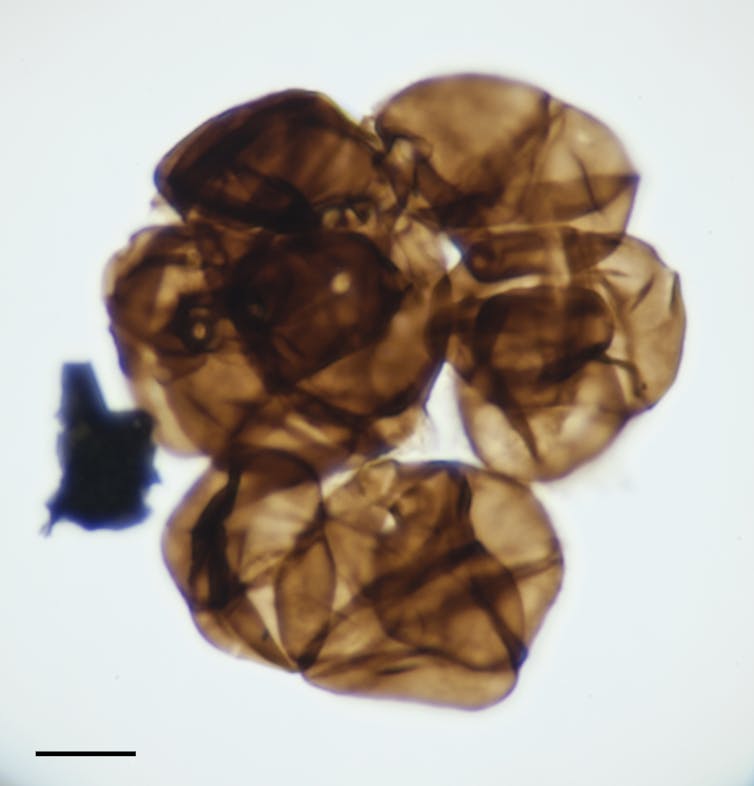
When plants first ventured onto the land, evolving from freshwater-dwelling algae, more than 500 million years ago, they transformed the planet. By drawing carbon dioxide from the air, they cooled Earth, and by eroding rock surfaces they helped build the soil that now covers so much land.
These changes to the planet’s atmosphere and land surface paved the way for the evolution of the biosphere we know. Land plants make up around 80% of Earth’s biomass.
The pioneering plants were small and moss-like, and they had to overcome two big challenges to survive on land: avoiding drying out, and surviving the Sun’s harsh ultraviolet light.
In rock samples from Canning Basin in the north of Western Australia, we have discovered 480 million-year-old fossilised spores from early land plants alongside spores from ancestral water-dwelling algae. These are the oldest land plant spores found, and they give us new clues about when and where plants made the jump to land and also how they managed to survive. The research is published in Science.
When Plants Colonised Land
Estimates of the initial timing of the colonisation of land by plants are based on large fossilised plant remains, calculations of how long it has taken different species to evolve (called “molecular clock” data), and the record of plant spores.
Molecular clock data suggests land colonisation occurred around 515 million years ago (in the Cambrian period), while the earliest plant stem fossils occur around 430 million years ago (in the mid-Silurian period). These early small plants did not have root systems or hard woody tissue, which may explain why their fossil remains are rare.
Read more: The evolution of land plants may have cooled the planet millions of years ago
Alternatively, we can look at the spores of plants. Spores are simple reproductive units that carry genetic material (much simpler than seeds, which did not evolve until much later). For successful reproduction, the spore walls of land plants had to be strong enough to resist drying out and damage from ultraviolet radiation.
These resilient spore walls are also what allows the spores to be preserved for hundreds of millions of years in ancient sediments, and to be extracted from those sediments using strong acids as used in this study. We then studied the shapes of the spores under the microscope.
The Shape Of Spores
The spores of the earliest land plants occur as more or less regular geometrically arranged groups of two or four cells. Such spores and have been found in sediments as old as 465 million years (in the Ordovician period), which places them at least 35 million years before any known larger plant fossils.
However, older spores (from around 505 million years ago) have also been found in the United States. Paul Strother (of Boston College, my co-author on the new Canning Basin research) and his colleagues have shown these older spores are likely to derive from freshwater algae called charophytes.
These older spores occur as irregularly shaped “packets” of cells. These same “packets” of spores also occur in the fossils we found in the Canning Basin, dated to around 25 million years later.
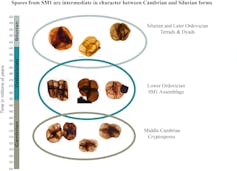
Charophyte algae live semi-aquatically. To survive in this situation they developed genes to resist desiccation and the damaging affects of UV.
The earliest land plants either captured parts of that ancestral algal genome, perhaps through “horizontal gene transfer” in which bacteria move genes from one organism to another, or developed similar genes on their own.
Given the time frame of millions of years, it suggests the origin of the land plants did not occur as a singular event. We found both land plant spores, with either two or four cells, and irregularly packaged algal spores in the Canning Basin assemblage, which shows land plants and their algal ancestors existed together in the same area at the same time.
It also shrinks the time gap between estimates of land colonisation from molecular clock data (515 million years ago) and fossil evidence. At around 480 million years old, the Canning Basin record is the oldest yet found anywhere in the world.
Where Did Land Plants Get Their Start?
Our discovery follows from earlier studies of land plant spores in Canning Basin. In 1991 spores dated around 440-445 million years ago were found, and more dated to 460 million years ago were found in 2016.
Those two records were only found after examination of extracts from about 100 core samples in efforts to determine the age of the rock sequences, which shows the spores are rare. The sediments deposited in the Canning Basin in this period are mainly from marine environments, as we can see from shelly fossils and microfossils such as conodonts.
Read more: Ancient teeth sharpest to date
The early land plants, like their charophyte algae ancestors, grew in freshwater settings at the fringes of the sea. Spores and sediments were washed into these areas. So the fossil records that have come down to us depend on the geography of the ancient world.
In 2020 Geoscience Australia in collaboration with the Geological Survey of Western Australia drilled a well in the southern part of the Canning Basin to understand the geology of the subsurface rocks. After acid extraction of rock samples from a geological formation called the Nambeet Formation, which dates to the Early Ordovician period (485 million to 470 million years ago), we identified land plant spores with the typical regular arrangements of two or four cells.
As part of that work, we examined preparations of plant spores, already mounted on glass slides, from the original section of the Nambeet Formation drilled in 1958. And here we found the first record of land plant spores associated with spores from their algal ancestors. Our discovery would not have been possible without the access to these earlier materials provide by the WA government.
Further studies are needed to determine where additional algal and land plant spores occur in Australian sediments from the late Cambrian and Ordovician periods. New data may also shed light on where the land plants got their start: was it on this continent, as others have suggested?
The present work has emphasised the importance of access to previous data and materials, and we acknowledge the critical science infrastructure role of curating geological samples and data by the WA government.![]()
Clinton Foster, Honorary professor, Australian National University
This article is republished from The Conversation under a Creative Commons license. Read the original article.
Furore Over ‘Modern’ Swimming Trunks At Avalon Beach



More Time To Prepare For HSC
- Extend the hand in date for all major projects by two weeks. The hand-in date for Industrial Technology has been extended by four weeks
- Reschedule Drama performance exams to run from 6 to 17 September
- Music performance exam continue as scheduled, running from 30 August to 10 September
- Reschedule the written exams to begin one week later on 19 October with HSC results out on 17 December.
HSC Online Help Guide
Stay Healthy - Stay Active: HSC 2021

Meanwhile... Back At The Beach: Isolation Surfing In Avalon - A Short Film From Home By Tim Bonython
Researchers Find A ‘Fearsome Dragon’ That Soared Over Outback Queensland

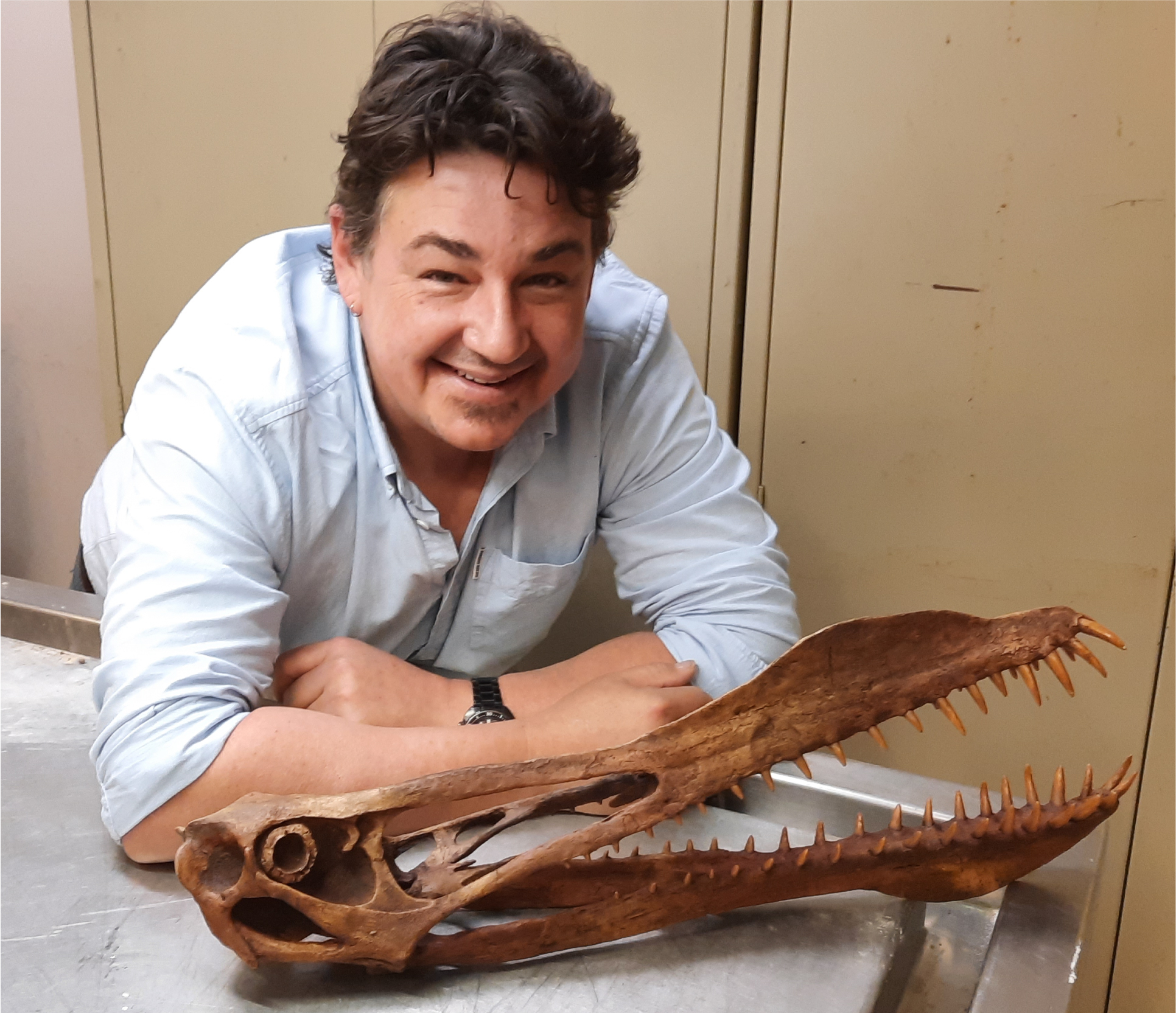
Ficus Macrophylla F. Columnaris - Lord Howe Fig
Here are 5 new species of Australian trapdoor spider. It took scientists a century to tell them apart
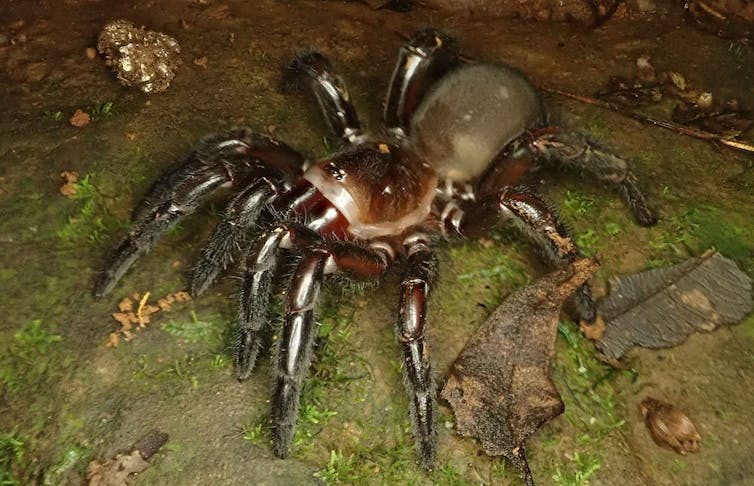
After a century of scientific confusion, we can now officially add five new species to Australia’s long list of trapdoor spiders — secretive, burrowing relatives of tarantulas.
It all started in 1918, when a species known as Euoplos variabilis, was first described. Since then, this species has been considered widespread throughout south-eastern Queensland.
However, in new research, fellow arachnologists from the Queensland Museum studied the physical appearance and DNA of these trapdoor spiders. They revealed this “widespread” species is actually several.
Many trapdoor spider species are short-range endemics, meaning they only occur in one small area. This makes them especially vulnerable to threats such as habitat destruction and degradation, which is why the discovery and description of these new species from Queensland is so important — they can now be protected from future threats.
Meet Australia’s Trapdoor Spiders
To many people, Australia’s spider diversity is a source of fear. To arachnologists like myself, it’s a goldmine.
Weird and wonderful new species are everywhere. While new discoveries are relatively common, it’s likely most Australian spider species are still yet to be named by science.
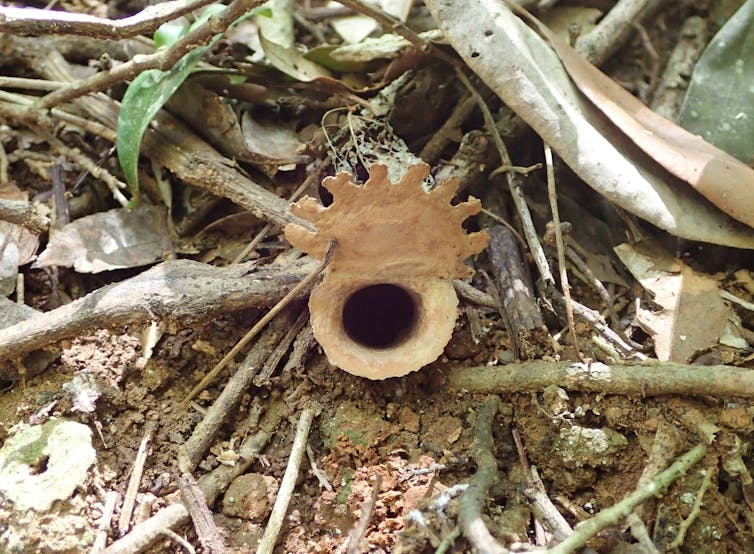
Trapdoor spiders live in burrows that usually have a hinged door at the entrance that the spider constructs using silk, soil or other material from the surrounding area. Their burrows can be camouflaged, but to a trained eye they’re easily found on the soil embankments beside walking tracks in eastern Australian rainforests.
In the past few years, I’ve been part of a team studying the spiny trapdoor spiders — a group of relatively large (up to about seven centimetres long, including legs) but highly secretive spiders found throughout Australia. They belong to an ancient group called the Mygalomorphae that, alongside tarantulas, includes the infamous Australian funnel-web spiders.

Like other trapdoor spiders, adult male and female spiny trapdoor spiders look shockingly different. When males reach adulthood, their physical appearance changes: their legs get longer and thinner, and their first appendages (called “pedipalps”) develop into structures used for mating. In contrast, adult females remain short-legged and robust.
Male trapdoor spiders undergo this dramatic change because as adults they must leave their burrow and search for females to breed.
Their long legs presumably help them run faster and further in search of females, and also allow them to keep the vulnerable parts of their body out of harm’s way once they meet the (usually larger) female, who isn’t always happy to see them.
The Mystery Of The Trapdoor Spider From Mount Tamborine
This striking differences in appearance between male and female spiny trapdoor spiders (“sexual dimorphism”) was at the heart of the mystery regarding the true identity of Euoplos variabilis.

When the species was first described in 1918, it was based only on female spiders, which were red-brown, large and lived in the rainforest of Mount Tamborine, just south of Brisbane.
In 1985, a male spider, also from Mount Tamborine, was finally linked to the original females. Matching male and female trapdoor spiders of the same species can be difficult because they look so different.
This all changed when the Queensland Museum team began researching the spiny trapdoor spiders of eastern Australia in 2015. When they looked in the museum’s natural history collection, it seemed like males of the Mount Tamborine trapdoor spider were widespread, spanning Brisbane to the Sunshine Coast.
But strangely, they found females from different locations looked different.
While females from the Mount Tamborine rainforest were large and red-brown, those from the lowlands of north Brisbane were small and tan. And in the rainforest of the D'Aguilar Range, north of Brisbane, the females were even bigger, with a bright orange carapace and red legs.
Could these really all be the same species?
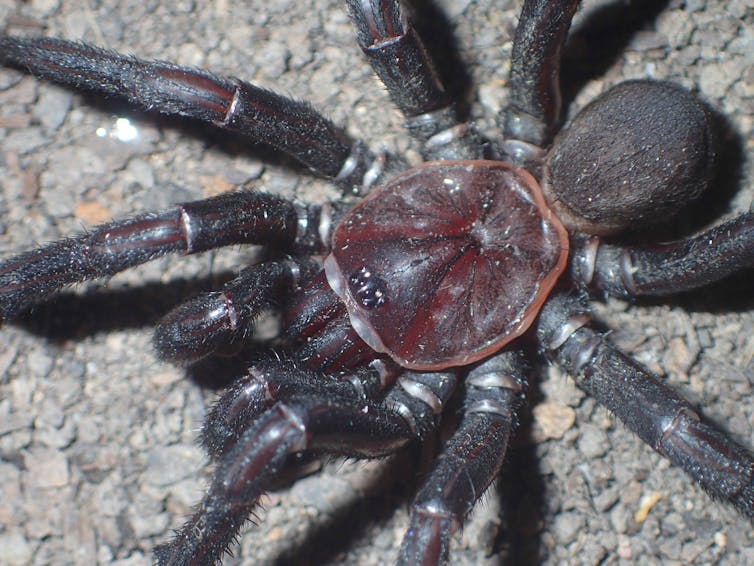
This Mystery Was Solved In Two Steps
First, in 2018, the museum’s arachnologists discovered the seemingly widespread males were actually members of a completely different group of trapdoor spiders, which also occurs in eastern Australia. In other words, there had been a male/female mismatch!
Then, by collecting fresh trapdoor spiders around south-east Queensland and studying their DNA, they discovered the Mount Tamborine trapdoor spider actually doesn’t occur in Brisbane at all. In fact, it’s found only in the mountain ranges bordering New South Wales, with Mount Tamborine being its the most northerly location.
Surprisingly, the female spiders found in Brisbane, the D'Aguilar range, and in various other areas, turned out to be several completely different species, new to science.
Read more: Ever wondered who'd win in a fight between a scorpion and tarantula? A venom scientist explains
These species can be distinguished by subtle differences in size and colour, and by differences in their DNA. The different species seem to be adapted to different habitats, at different elevations.
So, alongside Euoplos variabilis, the original Mount Tamborine trapdoor spider, the new confirmed species are:
Euoplos raveni and Euoplos schmidti, both from the lowland forests of the Brisbane Valley, south of the Brisbane River
Euoplos regalis from the upland rainforest of the D'Aguilar Range
Euoplos jayneae from the the lowland forests of the Sunshine Coast hinterlands
Euoplos booloumba from the upland rainforest of the Conondales Range
These five new species put the total number of known spiny trapdoor spider species to 258.
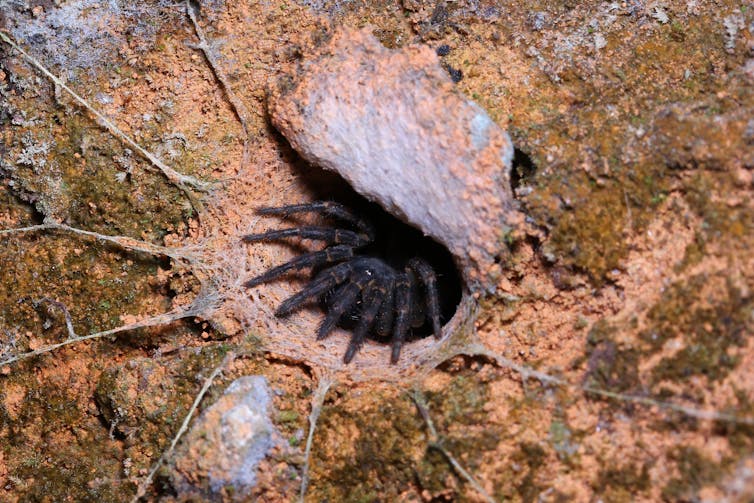
What Happens Now?
And so, the mystery was solved. Another small fraction of Australia’s beautiful biodiversity is known to science and can be preserved. But the story isn’t over just yet.
To properly conserve these species, we need to understand more about how they live. This is why the research team and I are undertaking a long-term study on one of these new species, Euoplos grandis from the Darling Downs. We hope to learn the intricacies of their lives and to track whether populations are declining from threats such as habitat destruction.
Read more: Photos from the field: zooming in on Australia's hidden world of exquisite mites, snails and beetles
We’re also continuing our mission to discover and describe new species of trapdoor spider, not just from Queensland, but from all around Australia.
The story of the Mount Tamborine trapdoor spider exemplifies the type of detective work Australian scientists undertake on all types of animal groups. But when it comes to invertebrates, we’ve barely scratched the surface, with new species of bugs, spiders, worms and more waiting to be discovered.
Working on discovering these invertebrates comes with a sense of urgency. These species need a name and formal protection, before it’s too late.
Jeremy Wilson and Michael Rix from Queensland Museum were co-authors on this article![]()
Mark Harvey, Curator of Arachnology at the Western Australian Museum, Adjunct Professor, The University of Western Australia
This article is republished from The Conversation under a Creative Commons license. Read the original article.
How venomous snakes got their fangs
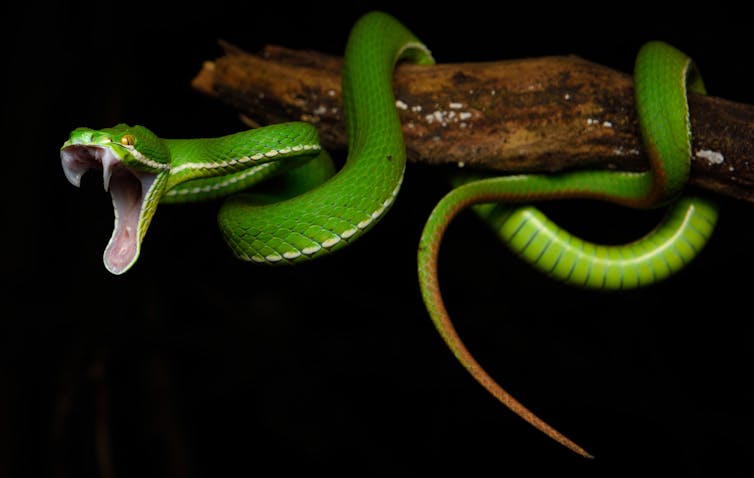
Venomous snakes inject a cocktail of toxins using venom fangs — specialised teeth with grooves or canals running through them to guide the venom into a bite wound. Uniquely among animals, grooved and tubular teeth have evolved many times in snakes.
Our new research, published today in Proceedings of the Royal Society B, reveals this happened via a modification of tooth structures that probably served to help anchor snakes’ teeth in their sockets. In certain species, these structures evolved into grooves running the length of the tooth, which served as a handy conduit to deliver venom.
Of the almost 4,000 species of snakes, about 600 are considered “medically significant”, meaning they can deliver a bite that would require hospital treatment, but many more have small fangs and are only mildly venomous. The appearance of mild venoms is thought to predate the appearance of venom fangs in snakes.
Venom fangs are positioned in one of three main ways: fixed at the back of the mouth, as in crab-eating water snakes, cat-eyed snakes, twig snakes and boomslangs; fixed at the front of the mouth, as in cobras, coral snakes, kraits, taipans and sea snakes; or at the front of the mouth and able to fold backwards or sideways, as in adders, vipers, rattlesnakes and stiletto snakes.

The Repeating History Of Fangs
By looking at snakes’ evolutionary tree, we can assume the most recent common ancestor of all fanged snakes was probably fangless. This seems much more likely than the alternative: that fangs were acquired once and then lost independently in dozens of different snake lineages.
Read more: How snake fangs evolved to perfectly fit their food
So how did snakes repeatedly evolve syringe-like teeth from the simpler cone-shaped teeth of their ancestors?
To address this question, we took a closer look at snake teeth and how they develop. We examined 19 species of snakes, including both venomous and non-venomous species and one early fossil form. We used both traditional methods, such as studying slides under a microscope, and cutting-edge microCT scans and biomechanical modelling.
The Secret To Snake Teeth: Dental Origami
We found that nearly all snakes — whether venomous or not — have teeth that are tightly infolded at their base, and look wrinkly in cross-section (the wrinkles in the red part of the diagram below).

These folds or wrinkles occur in a tooth layer called dentine, and are known as “plicidentine”, from the Latin word “plica”, meaning “fold”. Plicidentine has been found in many extinct animals and a handful of living fish and lizard species. The function of these folds is not clear, but one theory is they make teeth less likely to break or bend during biting.
However, when we tested this idea using computer simulations on digital tooth models with and without these folds we found that this is not the case.
Snakes replace their teeth throughout their life, rather like sharks, and their teeth do not have deep sockets. So we think the folds could improve the initial attachment of new teeth to shallow sockets by providing a larger area for attachment.
Regardless of the original function of folded snake teeth, what is really interesting is that in venomous snakes, one of those folds is much larger than the others and extends up the tooth to produce a groove: the venom groove.
Read more: Why are some snakes so venomous?
These long, single grooves have occasionally been found in the teeth of other species, such as the venomous Gila monster, which has plicidentine folds and associated grooves in all of its teeth. Importantly, the grooved teeth of the Gila monster can occur in the mouth away from the venom glands, implying a disconnection between the two. We also found that some venomous snakes occasionally have grooves on teeth other than the venom fangs; such teeth are not connected to the venom glands.
So, grooved teeth can occur all over the mouth, even away from the venom glands and their ducts, and we found a clear connection between the presence of plicidentine and venom grooves. This led us to hypothesise that the original condition for venomous snakes could have been that of randomly expressing grooves on their teeth simply as a result of enlarged plicidentine folds, independently of venom glands.
Next, we looked at how the grooved fangs and venom glands of venomous snakes could have evolved together to become an efficient structure for delivering venom.
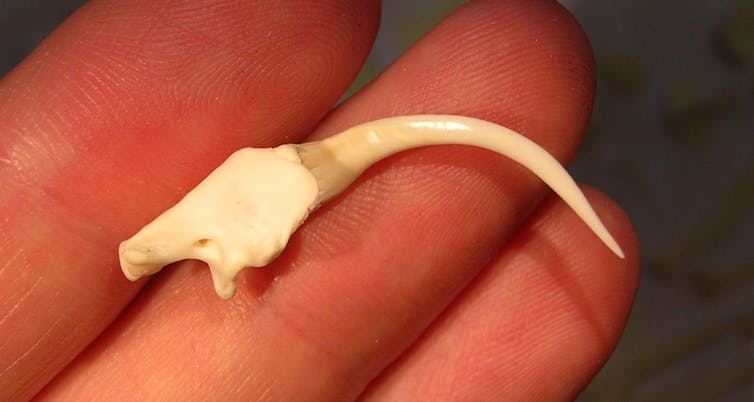
Among the ancestors of today’s venomous species, the presence of venom glands (or their precursors, the modified salivary glands called Duvernoy’s glands) was an important prerequisite for the refinement of grooved teeth into enlarged venom fangs.
We think that when a grooved tooth appeared near the discharge orifice of the venom gland, natural selection likely favoured its increase in size and efficiency, as that tooth was more effective at injecting venom.
This refining evolutionary process would eventually produce the large, syringe-like fangs we see today in snakes such as cobras and vipers, where the edges of the groove meet to form a needle-like tubular structure.
This discovery shows how a simple ancestral feature, such as plicidentine (wrinkles on the tooth base likely related to tooth attachment), can be modified and re-purposed for a completely new function (a groove for venom injection). And this could help explain why snakes, uniquely among all animals, have evolved venomous fangs so many times.![]()
Alessandro Palci, Research Associate in Evolutionary Biology, Flinders University; Aaron LeBlanc, Postdoctoral Fellow in Vertebrate Palaeontology, King's College London, and Olga Panagiotopoulou, Senior lecturer, Monash University
This article is republished from The Conversation under a Creative Commons license. Read the original article.
Doing a VET subject in years 11 and 12 can help with a job and uni. Here’s what you need to know about VET in the senior years

This article is part of a series providing school students with evidence-based advice for choosing subjects in their senior years.
Vocational education and training, or VET, is where you learn skills for employment. Think of plumbers, veterinary nurses, fashion designers, make-up artists, chefs, childcare workers, furniture makers, shipbuilders, carpenters, builders, electricians, laboratory and cybersecurity technicians, surveyors, legal assistants and many other vocations.
VET is done in secondary schools and post-school educational organisations such as TAFEs or private training institutions. It’s also provided in workplaces and in the community.
It can be done at your own pace, with a group through online learning, in the classroom, or a combination of these. If you’re thinking of doing a VET subject in the senior years at school, here’s what you need to know.
What Kinds Of VET Qualifications Are There?
Secondary school students can enrol in nationally recognised VET together with other school subjects. This includes doing school-based apprenticeships or traineeships.
Provided students meet necessary requirements, they can finish school with a VET qualification along with their secondary school certificate.

VET studies at school involve a combination of classroom and work-based learning. School-based apprenticeships and traineeships are a combination of classroom learning and on-the-job training under a contract of training with an employer.
In 2020, 241,200 secondary school students across Australia were doing VET that contributed to their senior secondary school certificate. This was an increase of around 2% on the previous year. More males did a VET course than females.
Read more: We need to change negative views of the jobs VET serves to make it a good post-school option
If you want to do a school-based apprenticeship or traineeship you need to have an employer willing to employ you. In 2020 around 7% (17,800) of secondary students doing VET decided on this pathway. Queensland had the highest proportion of school-based apprentices and trainees of all states and territories.
The top five qualifications done by school-based apprentices and trainees in 2020 were in business, retail, hospitality, childcare, and sport and recreation. Nearly half of all students doing a school-based apprenticeship or traineeship in 2020 enrolled in one of these qualifications.
Most secondary students who do VET don’t do a school-based apprenticeship or traineeship. They do other types of VET studies instead. The top five enrolments in 2020 included qualifications in hospitality, business and construction.
The Certificate II in Skills for Work and Vocational Pathways, a general qualification that helps prepare people for entry into the workforce and/or further vocational training, had the second highest number of enrolments.
Depending on the VET course, students can learn at school, in purpose-built facilities like a trade training centre, or at the premises of an external training provider such as a TAFE or other VET institution.
Schools may also join with other schools in a cluster arrangement to increase what students have on offer. If your school does not have a course you are interested in you can check if you could do it through another school.
It’s A Flexible Pathway To Work And Further Study
VET is a competency-based system, which means the focus is on the development of a skill. Students then get the opportunity to demonstrate they can perform that skill. It doesn’t matter how the person goes in comparison with others — it only matters how they perform against the standard required.
The VET system provides flexible pathways, enabling students to move in and out of education and training to get the skills and qualifications they need to enter the jobs market. This includes starting their own business, moving through jobs or transitioning to new or related jobs and courses.

In 2019, there were 4.2 million people — almost a quarter (23.4%) of the Australian resident population aged 15-64 — enrolled in nationally recognised VET courses.
Participation is highest among younger people: 43.2% of 15-19 year olds and 32.2% of 20-24 year olds did some VET in 2019. Some students enrolled in qualifications (such as the Certificate II in Automotive Vocational Preparation or a Certificate III in Electrotechnology Electrician). Others enrolled in short courses such as the Course in First Aid Management of Anaphylaxis or the Course in Asbestos Awareness. Others enrolled just in a single subject, such as learning how to provide cardiopulmonary resuscitation (CPR) or the responsible serving of alcohol.
The number of students enrolled in short courses and stand-alone subjects has increased steadily over the past several years.
Why Do Students Do VET?
Secondary students do VET studies for a range of reasons including to get a qualification while still at school.
Around 45% of secondary students do VET for employment reasons, while 30% do it for further study. About a quarter of secondary students do VET for personal development.
Doing a VET course while at school can help in getting a job directly after you finish school. Research has found students who did VET studies at school, including school-based apprenticeships and traineeships, were more likely than those who didn’t to be in full-time and permanent employment five years after their studies.
Read more: Most young people who do VET after school are in full-time work by the age of 25
In the states and territories that allow it, many students do VET studies that count toward their ATAR. Some 45.2% of students in secondary schools that do VET also get an ATAR.

Research has also explored the intended occupation of students doing VET in secondary school and whether they actually get that job. The strongest links were in trade-related study areas — electrotechnology and telecommunications, construction trades, and automotive and engineering trades. There were also strong links across other occupational groups, like sales assistants, and carers and aides.
Will I Earn Less Money Than If I Go To Uni?
The most common post-school qualifications for secondary students who did VET studies were VET qualifications. But almost 20% of students had also gone on to complete a bachelor’s degree.
People with university qualifications generally earn more per week than people with VET qualifications. But this masks the variability in wages between industries and jobs that require VET qualifications.
For example, people who have a VET qualification and work in the agricultural, forestry and fishing, or mining industries have similar, if not higher, weekly earnings as those who have a university qualification.
Read more: Choosing your senior school subjects doesn't have to be scary. Here are 6 things to keep in mind
Technicians and trades workers (such as plumbers, information communications technology support technicians, operating theatre technicians) who have VET qualifications earn as much per week, if not more, than those with university qualifications in a similar job.
You can’t go wrong doing VET studies at school. It sets you up for a job straight after school as well opening up opportunities to do further study, whether that be more VET or a uni degree.
Read the other articles in our series on choosing senior subjects, here.![]()
Michelle Circelli, Senior Research Officer, National Centre for Vocational Education Research (NCVER) and Josie Misko, Senior Research Fellow, National Centre for Vocational Education Research (NCVER)
This article is republished from The Conversation under a Creative Commons license. Read the original article.
Art, drama and music lower stress. Here’s what you need to know if you’re thinking of taking arts in years 11 and 12

This article is part of a series providing school students with evidence-based advice for choosing subjects in their senior years.
If you’re thinking of taking a performing or visual arts subject in years 11 and 12, you are probably weighing up a few considerations. These may include your passion and interest in the subject, how doing one or two arts subjects might affect your entry into university and what you could do with the skills you learn.
Nearly 30% of all year 12 students across Australia (53,311 year 12 students in total) chose to study visual or performing arts in year 12 in 2019. But twice as many girls took an arts subject (40%) as boys (18%).
The arts subject selection you have will depend on what state you live in. But these are the types of subjects you can broadly choose from in visual and performing arts.
Visual Arts
Visual arts is a theory-based subject. You will learn about different artworks and the role of artists in society. You will engage in discussions and writing tasks about what artworks mean. This includes ideas from historical and contemporary arts and culture.
Read more: Here's looking at: Blue poles by Jackson Pollock
In studio arts, you will learn about artists’ practices and the art industry while also developing your own art.
You will experiment with techniques and art processes in the mediums of your choice. These include photography, painting, drawing, printmaking, film, digital arts, ceramics or textiles. You will develop your own artworks, document this process and exhibit your work.

Media arts involves researching and learning about narrative across different media forms. You will demonstrate your understanding of production processes by designing a media product (such as a film or photographic exhibition) and presenting it.
Product design and technology involves learning about, and experimenting with, materials and processes. The materials will vary from school to school, but you may be able to choose from wood or timber, metal, fabrics, polymers, glass or ceramics. You will learn how to design and put these designs into production.
Performing Arts
Dance will teach you about dance traditions, styles and works from different cultures. You will learn about music theatre, the work of tap or jazz or street performers, ballet and modern dance, and choreography. As you learn this content through theory and practice, you will engage in analysis of dance that will help you develop your own choreographed performance with others.
Drama involves studying practice and theory to understand the ways theatre and performance can communicate stories and ideas. You will explore different traditions of drama including costume, set design and lighting, make-up, masks, props and puppetry and sound design. You will ultimately create, develop and present a solo performance.

Music has different pathways depending on what state you live in. In the Victorian curriculum, there are three pathways culminating in units 3 and 4 of music investigation and music performance. These pathways require at least four years’ experience in learning an instrument. Another pathway, VET music industry, focuses on performing in public.
While each pathway and qualification is different, you will learn through listening, performing and composing. You will apply creative thinking skills to analyse and critique contemporary and historical music and musicians.
What Benefits Will I Get Through Studying Arts?
From my research and practice as an artist and university educator of 15 years, I know any of the year 11 and 12 art subjects will enable you to learn from extensive creative processes. Developing a set of paintings will require experimenting with techniques, learning from other artists, developing a theme or message to convey, and ensuring the subject matter in your paintings is suitable for conveying the message and appropriate for the style you are working in.
Read more: Thrash not trash 🤘: why heavy metal is a valid and vital PhD subject
Your technique must be proficient to achieve good marks. You also need to document the development of your research and ideas with visual images you created and written statements in journals. This is somewhat risky as you are putting yourself out there. It must also come together in a certain time frame, which can be challenging and stressful.
But it will pay off as research shows arts education has many benefits.
Beyond technical knowledge and skills, benefits include actual enjoyment and stress relief. The senior years can be stressful years, so adding an arts subject to the mix can actually be a way to take care of yourself. It is well documented the arts offer mental health benefits as the focus on creating art is a form of mindfulness.

Creating art is a process of focusing on bringing together subject matter, technique and creative experience to communicate a story or an idea. The ability to express your feelings through the arts is a form of release. And reflecting on its meaning can provide insights into your self, which is therapeutic.
Read more: Choosing your senior school subjects doesn't have to be scary. Here are 6 things to keep in mind
In addition, you will develop a range of skills that will help you in any area of life. Beyond creativity and thinking skills, research shows arts education will help you enhance your communication and expressive skills, as well as boosting your confidence and self-esteem. Teamwork, too, is a big part of the arts, and learning this skill will be helpful at university and in your future employment.
The presentation, communication and performance skills you learn are adaptable for public speaking, community and public art careers, as well as teaching.
Will Doing The Arts Bring Down My ATAR?
The ATAR is a university-based system that determines how many students will get into particular courses. Like a queue, it ranks you against everyone in the year 12 age group.
But university entry, particularly when it comes to the arts, doesn’t rely on ATAR. It often requires an interview process with presentation of a portfolio.
If you’re not looking to do arts at university, it’s still important to choose senior subjects you are interested in and good at. Plus, skills you learn in the arts can enhance your entry prospects. For instance, entry into a medical degree requires a high ATAR. But most universities also conduct an interview to test your empathy, collaboration and ethical reasoning skills – all of which are enhanced by the arts.
What Will I Do With These Skills After School?
Many students who study senior art go on to study the visual and/or performing arts at university. Some become self-employed artists. Others practise art on the side and that helps them maintain a good balance in life.

One ex-student, now in her late 20s, studied visual art and music in school but is now a psychiatric nurse who is also in a band. She said being a musician helps her cope with the stresses of her job.
Another ex-student, a 20-year-old male, studied the VCE VET in music industry as well as media arts, studio arts, visual arts, psychology and literature. He is a full-time intern in a technology company. He said the networking he does now is very close to what he had to do for the documentary he made in media arts. He also said his creative skills were helpful in the marketing material he designs.
You have to be a creative strategist to get people to give you time of day in sales and marketing.
Read the other articles in our series on choosing senior subjects, here.![]()
Shelley Hannigan, Senior Lecturer in Art Education, Deakin University
This article is republished from The Conversation under a Creative Commons license. Read the original article.
Which maths subject should I take in years 11 and 12? Here’s what you need to know

This article is part of a series providing school students with evidence-based advice for choosing subjects in their senior years.
Maths prepares students for the ultimate test — life beyond school. As maths is everywhere, regardless of where life leads you, the more maths you learn, the better prepared you may be to understand the world.
The Australian Curriculum intends to provide some consistency in what is taught at school, regardless of where you live. Maths is one of 15 senior secondary subjects.
However, states and territories maintain responsibility for local education. So there is variation in the range, focus and difficulty of maths subjects offered.
How Many Senior Students Do Maths?
It’s not compulsory to study senior maths across Australia, but most year 11 and 12 students still do so. Available data suggests just over 70% of year 12 students study maths, with slightly less females doing so than males.
However, enrolments are on the decline. For instance, between 2001 and 2013 the proportion of students studying the high school certificate in New South Wales, who did not take a maths subject, tripled from 3.2% to almost 10%. NSW has announced it intends to make maths mandatory in years 11 and 12 to arrest the decline in enrolments, but there has not yet been a timeline set for this move. Victoria is also widening its maths offering to senior secondary students.
Read more: Fewer Australians are taking advanced maths in Year 12. We can learn from countries doing it better
What Subjects Are Available For Me To Choose From?
The Australian Curriculum describes four senior secondary maths subjects, with each organised into four units, usually studied over the four semesters of year 11 and 12.
They are essential mathematics, general mathematics, mathematical methods and specialist mathematics. In Queensland, these are the subject names used. However, there are different names for different types of maths in each state and territory with some being more closely aligned with the Australian Curriculum than others. For example, in NSW the equivalent subjects have completely different names and also arrange content and concepts differently.
But all maths subjects have similarities when it comes to the knowledge and skills students will develop. They also teach students how to think, reason and communicate mathematically, describe and analyse data and evidence, and use digital technologies.

Essential mathematics (most closely aligned with foundation mathematics in year 11 in Victoria) focuses on students developing and using maths knowledge and skills to investigate realistic problems. The subject or subjects include the study of data and statistics and financial modelling. Students selecting these courses typically have work or a vocational education and training course in mind once they leave school.
Read more: More teens are dropping maths. Here are three reasons to stick with it
General mathematics (most closely aligned with general mathematics in year 11 and further mathematics in year 12 in Victoria) includes the study of financial modelling, geometric problems, and statistics. These are areas many of us encounter in our work and life. Students selecting this subject typically plan to go to university and study a course where maths may have practical and/or theoretical relevance. General mathematics is a pre-requisite for courses like aviation, ICT, and health science at Swinburne University.
Mathematical methods is where students are introduced to calculus. This is the study of relationships and change. For instance, is the spread of a particular virus increasing? Can we describe trends and patterns observed and make predictions about the future? Can we describe the total number of cases over a given time period and assess the impact of government intervention?
Students are also introduced to statistical analysis, which is describing and analysing phenomena involving uncertainty and variation. Students who choose mathematical methods are likely intending to study maths-related subjects at university such as science, engineering, medicine and IT related degrees.
Specialist mathematics should be taken together with mathematical methods, as it deepens and extends key ideas studied there. Students who do specialist mathematics and mathematical methods (or extension and advanced mathematics in NSW) intend to do maths related courses at university.
When we were teaching in school, many students studied two maths subjects in year 12 (mathematical methods and specialist mathematics, or mathematical methods and general mathematics). Everyone had different ideas on which maths they found the hardest.
Which One Should I Choose?
Parents and teachers frame subject selection around the question, “What are your plans for the future?”
Having an idea what you want to do once you finish year 12 will determine your interest in maths and motivation to learn it.
The future is uncertain with study and career pathways that are dynamically evolving. Research shows a 15-year-old today could have 17 different jobs over five careers in their lifetime. Maths is essential to a range of study and career choices — including vocational trades, nursing, teaching and mathematical sciences.
Read more: Thinking of choosing a science subject in years 11 and 12? Here's what you need to know
If you do choose maths, you should choose the maths subject that interests you and offers the best preparation for your destination beyond school, be it work, TAFE or university.
Unsurprisingly, studying senior maths at school increases your success when studying university maths units and courses. Some universities have pages where you can easily search by maths subjects rather than course.
School careers counsellors are an excellent resource for advising students on possible study and career paths and what maths subjects you may need.
It can also help to speak with maths teachers you know and trust, and family members and friends who have taken different subjects. Some people say some maths subjects are harder than others, but others argue it really depends on your interests and effort to take advantage of available opportunities to learn.
Be wary about the university and vocational education and training prerequisites and recommended subjects. Often students see a subject is recommended but not required, and opt not to take that subject.
However, when they enrol in the TAFE or university course in question, they might find a maths equivalent to a year 12 course is more or less squashed into a first semester unit. It is often easier to learn this content in year 12 with the support of a dedicated maths teacher than to try doing so in one semester in a new environment with unfamiliar teachers and peers.
What Should I Know About Scaling?
In calculating the ATAR, all subjects are scaled to account for the competition in the subject — not the level of difficulty. Maths and languages have additional scaling.
Scaling is to even the playing field, and students who take more challenging subjects usually get scaled up. Specialist mathematics is taken to be more difficult than mathematical methods which is taken to be more difficult than general mathematics. For mathematics, the subjects are compared against each other as well as against all other studies.
For example, in 2020 in Victoria, an initial study score of 30 was scaled to 27 in further mathematics, 34 in mathematical methods and to 41 in specialist mathematics.
Maths has never been more important or visible to making sense of the world. We believe there is a maths for every student and a choice that keep your options open for the future.
Read the other articles in our series on choosing senior subjects, here.![]()
Jill P Brown, Senior Lecturer in Mathematics Education, Deakin University and Carly Sawatzki, Lecturer in Primary Mathematics Education, Deakin University
This article is republished from The Conversation under a Creative Commons license. Read the original article.
Hidden women of history: how mother of 8, Mary Anne Allen, made do on the goldfields amid gunshots, rain and sly grog
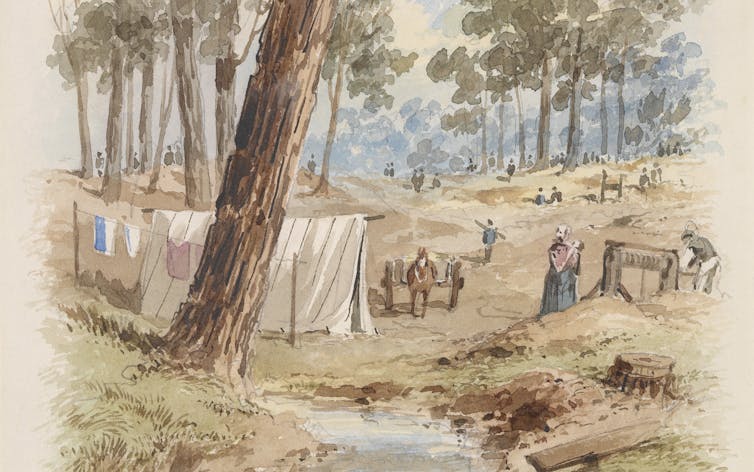
In this series, we look at under-acknowledged women through the ages.
In February 1852, 46-year-old Mary Anne Allen set off from Melbourne for the Mt Alexander (Castlemaine) diggings with her husband Reverend John Allen and their eight children, the youngest aged five.
Histories of the Victorian gold rushes often overlook women’s presence on the goldfields in 1852. Women, children and home, however, were always part of goldfields life.
Mary Anne Allen’s diary appears to have been written for publication. In it she observes life on the diggings, not through the lens of masculinity and mateship, but through family and home.
A Perilous Journey
Englishwoman Mary Anne and her family had arrived in Port Phillip before the gold rushes. They migrated in 1849 to deliver the word of God for Scottish evangelist and colonial enthusiast John Dunmore Lang. Yet two years later the family abandoned their congregation in search of gold, “dreaming of little beyond wealth and competency”.
On route to Mt Alexander, the family almost lost their dray over a ravine. Their son Frederick tried to “scotch the wheels” (likely wedging a stone or bar to stop them rolling) but to no avail.
“My little girl came running towards me”, wrote Mary Anne in her diary. “She said we expected father would have been killed but Fred’s hand was smashed and two of his fingers broken.” Disaster was averted, but it would be just the beginning of the family’s trials.
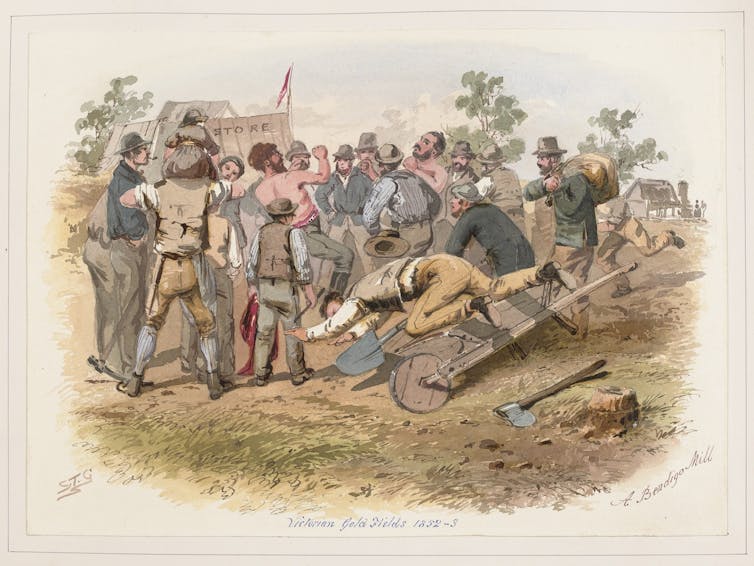
Next, four bushrangers bailed up a bullock driver ahead of them. The Allen family continued cautiously forward, one of her sons armed with a gun, the second with a hatchet, a third with a club. Mary Anne’s younger children inquired anxiously, “What will they do with you Mamma?” Fortunately, fate spared Mary Anne an answer.
Life In The Clearings
Mary Anne found the new goldfields “remarkably picturesque and singularly beautiful”. The countryside was already home to miners’ mia-mias (based on Aboriginal dwellings) and hundreds of tents, scattered for miles through the still dense bush.
But clean drinking water was impossible to find. A German miner gave Mary Anne’s children a cup of water, milky with chalk. Another miner gave Mary Anne a loaded gun to help her protect any water they found. The family moved on to nearby Barker’s Creek, where there were fewer tents and more available water.
The Allen’s erected their tent and furnished it with handmade “bush bedsteads”: saplings driven into the ground and bed cases filled with dried leaves. Their table was topped with bark and the floor carpeted with the same. Mary Anne wrote that the bark decomposed rapidly in wet weather, producing an “exceedingly unpleasant” smell.

Many miners’ tents, she wrote, were lined with blankets inside and bullock hides externally to keep out the weather. Her sons built a stone fireplace with bark sides, which they topped with an old sugar cask. They put up a tarpaulin awning so the family could bake damper and roast meat without standing in the rain. Even with these precautions, mould covered everything.
Living With Uncertainty
Families lived in fear of the dangers presented by mine shafts. The lesson was brought home for the Allen family as they watched a man trapped down a shaft. Then another man went in after him. The father of one of the men rushed forward and he too fell headlong into the mine. The whole party, Mary Anne noted disapprovingly, was the worse for “the influence of spirits”.
Bushfires were a frightening, yet entertaining, reality:
One small tree burnt through fell at our horses feet. We hastened onwards and when out of danger we sat and admired the grandeur of the scene.
At night, diggings glowed with fires outside every tent and lamps lit by candlewicks made from honeysuckle flowers soaked in oil. One night, as the family sat reading around their table, a gun was fired through their tent. The bullet landed on her son’s book: “So uncertain was life at Barker’s Creek”.
On the diggings, Sunday was not for religion but for domestic duties and domestic quarrels. Sometimes Mary Anne expected that “instant death would ensue from stabbing members of their own families”.
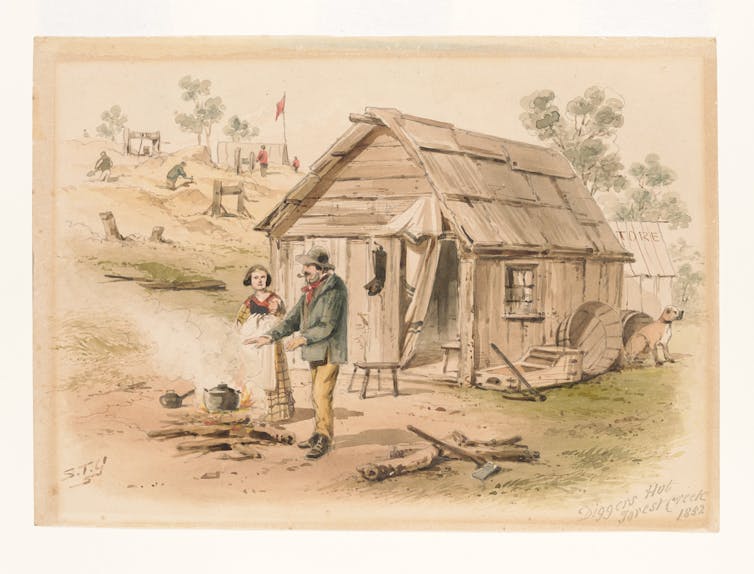
Read more: Emancipated wenches in gaudy jewellery: the liberating bling of the goldfields
Abrupt Endings
Living next door to a sly grog tent, Mary Anne reported: “Drunkenness, fighting, profanity and robberies were every day occurrences”. Her diary ends abruptly, to cries of murder and an aborted gold robbery.
She did not record whether her family found gold. Historical documents reveal the family only stayed six months on the diggings. John did not return to the church until just before his death in 1861, by which time the couple had bought a number of properties in Melbourne.
My doctoral research is the first time Mary Anne’s diary has been written into goldfields history. Her manuscript is entitled Mrs Allen’s Trip to the Gold Fields, suggesting she intended it for publication. Now, almost 170 years later, we can read her observations as one of many women on the diggings in early 1852.
Read more: Friday essay: masters of the future or heirs of the past? Mining, history and Indigenous ownership ![]()
Katrina Dernelley, PhD Candidate in History, La Trobe University, La Trobe University
This article is republished from The Conversation under a Creative Commons license. Read the original article.
Yeah, nah: Aussie slang hasn’t carked it, but we do want to know more about it

Writer C.R Read cautioned in 1853 “that Englishmen going to the Australian digging should search their souls and ask themselves ‘if they can stand a little colonial slang’”.
This slang – our Australian slang – has been a lightning rod for pride, prejudice and confusion. “Dustbin language” writes one (not a huge fan), “people’s poetry” writes another (we’d agree).
Expressions like budgie smugglers, fair suck of the Siberian sandshoe or flat out like a lizard drinking may not be the stuff of great literature and poetry, but they draw on the same devices: metaphor, irony and features of sound such as alliteration.
We know what you’re thinking: “Yeah, nah. Aussie slang’s carked it. When was the last time you heard someone say "cobber” or “dinkum”?“ Fairly recently, actually —- we’re starting to collect these terms, and rest assured, we’re finding them.
Read more: Get yer hand off it, mate, Australian slang is not dying
What’s Interesting About Australian Slang
What’s interesting about Australian slang -— as far as "slang” goes -— is the mere fact that some of these words stick around for so long, and that we still call them slang. They may not be part of your everyday lingo, but they can have a special place in your heart.
And heaps of grouse Aussie words have been doing the hard yakka for decades—grouse is around 100 years old. Mate is even older, even though since the 1930s people have been worrying about its well-being. First it was the arrival of digger, then the threat of buddy or pal. Now we worry mate will die at the hands of dude.
But which words go, and which words stay, and which ones stay slangy? And why do we love this language so much?

Getting To The Bottom Of Australian Slang
We could try to answer these questions by collecting data in a survey —- and we are doing just that. We can also look at the results others have gathered. We’re doing that, too. And we can give you a teaser of what we’ve found.
ABC radio stations around the country have asked their listeners: “What do you think is the greatest Aussie slang word or phrase?”. Out of more than 1,000 unique phrases, the answer is (drum roll please!) —- various versions of mate, followed by yeah, nah (though mate gets unfairly boosted because it’s tagged onto so many favourites like g’day mate).
Another place to look is in contexts where our knowledge about slang is made explicit. We’re fortunate to have such a data source: The Age newspaper runs a daily quiz on its puzzles page, and questions about slang appear occasionally. A sample from April 2006 until March 2021 contains 109 such questions (that’s about one slang question every six weeks).
Of those 109 questions, 26 explicitly mention Australian slang and another two mention Australian rhyming slang. Three expressions are repeated (furphy and spit the dummy each occur four times, and daks twice). This means there are 19 expressions identified as Australian, plus the two rhyming slang expressions—- actually another of the 19 (cheese and kisses “missus”) is rhyming slang too, but not identified as such. Here’s the full list:
- sanger
- dunny
- bogan
- daks
- strides
- spit the dummy
- shoot through like a Bondi tram
- sparky
- drongo
- thunderbox
- gum sucker
- mozzie
- furphy
- mandarin
- pineapple
- have a gander
- ratbag
- snag
- cheese and kisses
- illywhacker
- dead horse
- Noah’s Ark
A Cabinet Of Linguistic Wonders
A curious collection, you might well be thinking. And you’d be right.
It has a few staples of you-beaut Aussie lingo, some minted in this country (sanger, snag, drongo). Many are part of everyday language (furphy, bogan), and some we’ve even gifted to the rest of the world (ratbag and its offspring ratbaggery, spitting the dummy). Shortenings like mozzie are also being exported (and let’s not forget the global Aussie rockstar selfie). These shortenings are thriving, as any sparky or garbo could tell you.
There are also a few lexical zombies on this list. When did you last use like a Bondi tram, or pineapple for that matter, unless you’re getting the rough end of it. This pineapple, though, is the A$50 note (compare the $5 prawn, $10 blue (swimmer), $20 lobster and $100 avo). They’re slang curiosities – rarely heard but still loved.
There are those on this list that (wait for it) were originally American English. True, pinpointing the origins of slang is notoriously difficult, but have a gander “to look” does make its first appearance in early 1900s American criminal slang. Even illywhacker takes its inspiration from American spieler “con-man” (it needs some fossicking to track down illy’s origin in the word “eeler-spee”, a transposition of spieler).

Others on this quiz list were once British English, but we’ve given them an Aussie makeover. Strides originally referred to pantaloons with plenty of stride. And daks, a blend of Dad and slack(s), was the exclusive label of Simpson’s of Piccadilly; it lives on in our beloved trackie daks (these days our pandemic pants) and newly minted dack “to steal something” (presumably by shoving it down your daks).
Dunny comes from dunnakin underworld slang for what was known euphemistically as “the necessary” (danna “dung” + ken “house”). Even the thunderbox isn’t our own. Its origin is unquestionably British, as is the mandarin “senior public servant”, though we see its potential as Aussie rhyming slang mandarin duck.
Read more: How Australians talk about tucker is a story that'll make you want to eat the bum out of an elephant
Looking For The Good Oil On Aussie Slang
“Who gives a mandarin”? We do, because there’s a special place in our cabinet of lexical wonders for slang and we want to know more about it. You’ll find long lists on the internet, and it features large in these quizzes. However, people disagree about what is or isn’t slang, whether or not something is Aussie, whether slang is dying, and what any of this means to us Aussies.
Slang is different things to different people. There are some contexts in which it can be presumed, and others in which it requires a lot more discussion, and a lot more sleuthing. Don’t leave us on our Pat Malone. We’d be happy as Larry if you could share some of your knowledge of Aussie slang with us.
You can take our survey here. Onya mate!![]()
Kate Burridge, Professor of Linguistics, Monash University; Dylan Hughes, PhD Student, Monash University; Howard Manns, Senior Lecturer in Linguistics, Monash University; Isabelle Burke, Research fellow in Linguistics, Monash University; Keith Allan, Emeritus Professor of Linguistics, Monash University, and Simon Musgrave, Lecturer in Linguistics, Monash University
This article is republished from The Conversation under a Creative Commons license. Read the original article.
Physical Activity Protects Children From The Adverse Effects Of Digital Media On Their Weight Later In Adolescence
NSW DPIE Fast-Tracked Assessment Program: Audit Office Of NSW Report
- deliver jobs
- progress to the next stage of development within six months of determination
- deliver public benefit.
- strengthen controls over conflicts of interest
- evaluate the Fast-tracked Assessment Program.
- deliver jobs – particularly in the construction industry
- be capable of progressing to the next stage of development within six months of determination
- deliver public benefit.
- estimated number of jobs created, including both construction and ongoing jobs, calculated using an objective tool and based on the Capital Investment Value of each planning proposal or DA
- DAs had to be capable of moving to construction within six months of determination and planning proposals had to be capable of lodging a DA within six months
- demonstration of public benefit.
- DPIE arranged for the Independent Commission Against Corruption (ICAC) to review the selection criteria and provide advice to mitigate risks in the selection process.
- all officers complete an annual conflict of interest declaration
- officers working on planning assessments do not have any unmitigated conflicts of interest
- officers are not in a position to be influenced by another officer with a conflict of interest
- advisors and consultants do not have any conflicts of interest
- quantify the costs and benefits of the case management approach
- assess which aspects of the program were most effective as a basis for further reform
- understand the impact on developments not accelerated.
New Report: COVID-19 Widens Australia's Stark Health Income Gap
- People in the highest income group are twice as likely (60 per cent) to report their health status as good, very good or excellent, compared with only 33 per cent of those in the lowest income group.
- People on social security payments under 65 were considerably more likely to have asthma (19 per cent) than those whose main income was wages or salary (11 per cent).
- Half of people on social security payments under 65 report mental health conditions (50 per cent). This is over twice as many as those whose main source of income is wages or salary (18 per cent).
- Over a third of people on social security payments under 65 report high psychological distress (36 per cent), compared with 10 per cent of people whose main source of income is wages or salary.
Computational Evaluation Of Drug Delivery Reveals Room For Inhalers Improvement
New Mothers’ Sleep Loss Linked To Accelerated Aging
Problems In Thinking And Attention Linked To COVID-19 Infection
Growing Evidence Of Vitamin K Benefits For Heart Health
Starving Pneumonia-Causing Bacteria Of Its Favourite 'Food' Holds Promise For New Antibiotics
Disclaimer: These articles are not intended to provide medical advice, diagnosis or treatment. Views expressed here do not necessarily reflect those of Pittwater Online News or its staff.